- cost-accounting

Gantt Task Bonus Plan: Definition; Formula; Applicability; Examples; Advantages And Disadvantages
On this page.
- Introduction
- Formula for Gantt Task Bonus Plan or Method
- Applicability of Gant Task Bonus Plan
- Advantages of using Gantt Task Bonus Plan to Compute Labor Cost
- Disadvantages of using Gantt Task Bonus Plan to Compute Labor Cost
1.1 Definition:
Gantt Task Bonus Plan is a wage incentive method of rewarding the employees who outperform the expected set output by the organization. In this case, high task efficiency is maintained by providing a bonus expressed in percentage form as a recompense for producing extra above the set standard output.
Gantt Task Bonus Plan sets a standard time as a benchmark against completion of a task based on a careful time and motion study. The employee’s actual performance is compared against the standard time to determine his efficiency and make the payments as supposedly.
The proponent of this payment model was Henry L. Gantt and he postulated that workers to be given a bonus if they complete the task before the set timeframe. Therefore, workers are guaranteed wages as per the determined time. In other words, the quantity of production to be done by the group is decided. Where by the amount of bonus is generally a percentage of the wages paid to the worker.
1.2 Formula for Gantt Task Bonus Plan or Method
So, how is the total wage income under Gantt Task Bonus Plan computed?
The schedule is as shown below
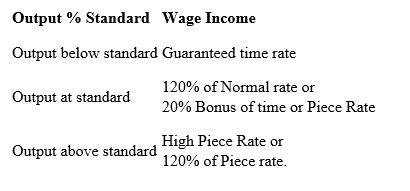
1.3 Applicability of Gant Task Bonus Plan
- Gantt Task Bonus Plan is applicable especially where output is affiliated to an individual employee and not a group.
- Gantt Task Bonus Plan works well where the employer has set a standard time for every task within the timeframe given.
- Gantt Task Bonus Plan is suitable where the employer has set a minimum time wage as guaranteed to all workers to avoid the risk of missing an income.
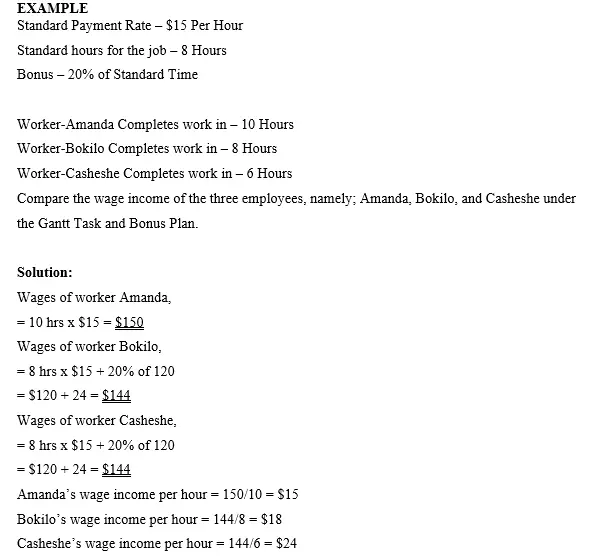
1.4 Advantages of using Gantt Task Bonus Plan to Compute Labor Cost
- Gantt Task Bonus Plan is less punitive as compared to Taylor’s differential piece rate is. Therefore, it is more acceptable by the workers.
- Gantt Task Bonus Plan is simplified. So, all stakeholders can follow the computational logistics thereof.
- Gantt Task Bonus Plan has a characteristic of wage or income assurance to all employees who is below average workers.
- Gantt Task Bonus Plan fairly differentiates the efficient and inefficient workers in a manner such that even the less performing is not pained much as it is in the case of Taylor’s differential piece rate is.
- Gantt Task Bonus Plan aids in further decrease of the fixed cost per unit due to increase in production associated with the incentive given.
- Gantt Task Bonus Plan promotes efficiency for wages increase progressively with increase in efficiency. As a result, the firm enjoys optimal resource utilization for there is minimal wastage.
1.5 Disadvantages of using Gantt Task Bonus Plan to Compute Labor Cost
Gantt Task Bonus Plan is characterized by discrimination element amongst the employees. This causes demoralization to some of the employees especially those who know that their productivity level is due to unavoidable factors such as domestic challenges.
Gantt Task Bonus Plan leads to lack of cooperation amongst employees. Hence no team spirit and this results to a decline in output.
Gantt Task Bonus Plan has set a guarantee plans to ensure that each employee goes home with a salary perk. However, this is not directly associated with an increased work efficiency.


Prefer a self-guided tour?
In just 5 minutes (no strings attached!), learn how market leaders use Leapsome to build high-performing teams, enable managers and retain their best talent.
What is a performance bonus & how to implement it at your company
The broad array of performance bonuses — both monetary and non-monetary — implemented by companies today enable employers to be innovative and strategic with how they reward and motivate employees. What’s more, they’re becoming more important than ever.
Why? Recent data shows that pay raises are likely to trend downward from an average of 4.4% to 4%, likely due to increasing economic turbulence and diminishing job opportunities for employees.*
As a result, more companies will need to offer competitive performance bonus packages to keep their top talent happy while staying within their organizational budgets.
In a fluctuating business landscape, the performance-based bonus presents a win-win solution for both employers and employees , as long as organizations are willing to collaborate with team members to get it right.
The good news is that it’s possible to create performance bonus plans that satisfy everyone — which is why, in this article, we’ll discuss:
- What performance bonuses are and how they work
- The difference between monetary and non-monetary bonuses
- A step-by-step guide to implementing an effective performance bonus plan
* Willis Towers Watson , 2023
🚀 Leapsome is your next step in compensation planning Now integrating powerful Mercer data, Leapsome Compensation gives you access to external benchmarks, internal analytics, and planning tools to simplify compensation management. 👉 Learn more
What is a performance bonus?

A performance bonus is a form of supplemental compensation that companies use to reward employees when they meet performance goals or agreed-upon objectives. It’s typically awarded around the time of a performance review , although an organization may choose to distribute it whenever they want to incentivize employees.
A performance-based bonus can come in monetary and non-monetary forms. Some of the most common performance bonuses include:
- Spot bonuses — Usually awarded upon completion of a specific task or meeting a goal, and they’re often unexpected
- Profit-sharing bonuses — A bonus based on company performance in which employees receive a percentage of company profits for a given period
- Annual performance bonuses — Reward employees for their contributions and development over a year
- Task bonuses or mission bonuses — Usually given after the conclusion of a large project or after hitting a significant milestone, such as the completion of a certain number of initiatives or serving a certain number of clients
Monetary vs. non-monetary: performance bonus examples

Both monetary and non-monetary performance-based bonuses exist to celebrate employee successes at work and show that you appreciate them . Still, deciding whether to reward employees with monetary vs. non-monetary performance bonuses depends on your desired results.
For example, if your goal is to get employees to meet sales targets or increase annual revenue by a certain percentage, a monetary bonus based on performance is a great way to show that when employees achieve revenue-generating benefits for the company, they’ll receive financial rewards.
Non-monetary bonuses tend to be more effective when rewarding employees for less financially tangible contributions — like how they embody company values or have made strides to advance within their development frameworks . These bonuses also tend to be more cost-effective.
Types of non-monetary bonuses include:
- Development opportunities like leadership training or courses to help an employee upskill
- Extra days off
- Fringe benefits like lunches, tickets to local events, or access to health and fitness programs
- Time off for volunteering with their favorite local charities or projects
- Free experiences like trips or unique activities in your area
How to implement a performance bonus plan
If you want your performance-based bonuses to effectively motivate, reward, and even engage your people, here’s our quick guide to setting up a performance bonus plan for your organization.
💡 Not sure how to assess employee performance to implement so you can create the right bonus plan? Leapsome’s performance reviews and skills frameworks can give you the actionable data and insights you need while creating and implementing performance bonus plans and setting up monetary rewards for your organization.
1. Choose your criteria & objectives
“The point is trying to drive outcomes. HR needs to work really closely with the business to determine: ‘What are we willing to pay for to get the outcomes we’re looking for?’” — LaCinda Glover , Senior Principal Consultant at Mercer, in a piece for WorldAtWork
The first thing to decide is whether your performance-based bonus structure will be geared toward an individual employee, a team, or employees across the company. Once you’ve decided who the plan is for, you can set the objectives for the performance bonuses — what results you want — and the performance criteria — what individuals or teams must do to earn the bonuses.
Suppose your goal is to motivate your team leaders to increase team engagement by a certain percentage. In that case, you might award the next performance bonus based on whether employees report feeling more supported and their efforts valued by their team lead in engagement surveys .
However, if you want to motivate more cross-functional hiring at the company level in the next three months, you could implement a referral bonus program for that quarter.
2. Invite employees to participate in setting objectives

At this stage, you still have the opportunity to refine your objectives, and ideally, you’ll invite your staff into this process. Why? Employees likely have more insight into how achievable your objectives are at any given point. In addition, setting objectives with them — rather than simply delegating these objectives to them — helps guarantee that individual goals are compatible with company goals.
Gathering team member input also helps you build a more competitive performance bonus plan. “If talent can find better pay and benefits elsewhere, most won’t hesitate to leave,” says Payscale’s Chief People Officer, Lexi Clarke , for WorldAtWork . “Even listening to employee feedback is an effective way to see what your employees’ bonus expectations are.”
3. Research performance-based bonuses for your employee needs & industry
Performance bonuses work best when the type of bonus matches your goals — and that means thinking outside of the annual holiday bonus box and researching what performance-based bonus works best for your industry.
On the individual level, for instance, you might award your company leadership an annual performance bonus if they meet targets in time for their leadership performance review . Similarly, at the company level, maybe your goal is to increase your revenue. In this case, profit-sharing bonuses let your employees enjoy the monetary benefits of their laser-focused efforts.
For tech teams and companies that use the SCRUM project management framework and work on tight deadlines, a mission bonus — typically awarded after completing a large milestone project — might be a great way to honor your teams’ hard work.
4. Select the performance bonus type that best suits your needs
We’ve mentioned different kinds of performance bonuses, but let’s consider them further with a few performance-based rewards examples. That way, you can reflect on the types that might work best for you.
- Spot bonuses — Awarded “on the spot” when employees achieve a specific result or complete a task.
- Task or mission bonuses — Similar to spot bonuses, but they’re usually larger, lump-sum bonuses to reward employees who reached a milestone.
- Profit-sharing bonuses — These can be given out regularly or on particular occasions to motivate employees to help meet revenue goals.
- Annual performance bonuses — Often distributed around the same time as the performance review . While some companies worry that they shouldn’t tie compensation to performance reviews , this assures employees that bonuses and raises aren’t arbitrary.
- Holiday bonuses — Companies often offer yearly bonuses to show appreciation for their people or celebrate successes.
- Sign-on bonuses — These are used to attract new talent and are offered to new hires during the onboarding process.
- Referral bonuses — Rather than relying solely on recruiters, companies use referral bonuses to incentivize their employees to help staff open positions.
5. Follow up on results & measure ROI
Once you’ve delivered your employee bonuses, you need to track the results of your performance bonus plan on employee productivity and engagement.
Leapsome can help you throughout this process as an all-in-one people enablement solution that lets you track employee performance , measure employee engagement , and manage compensation — all on the same platform. Our engagement, compensation, and performance tools communicate so you can use performance review and employee engagement insights to inform your performance bonus planning for the future.
Motivate & reward your employees with Leapsome
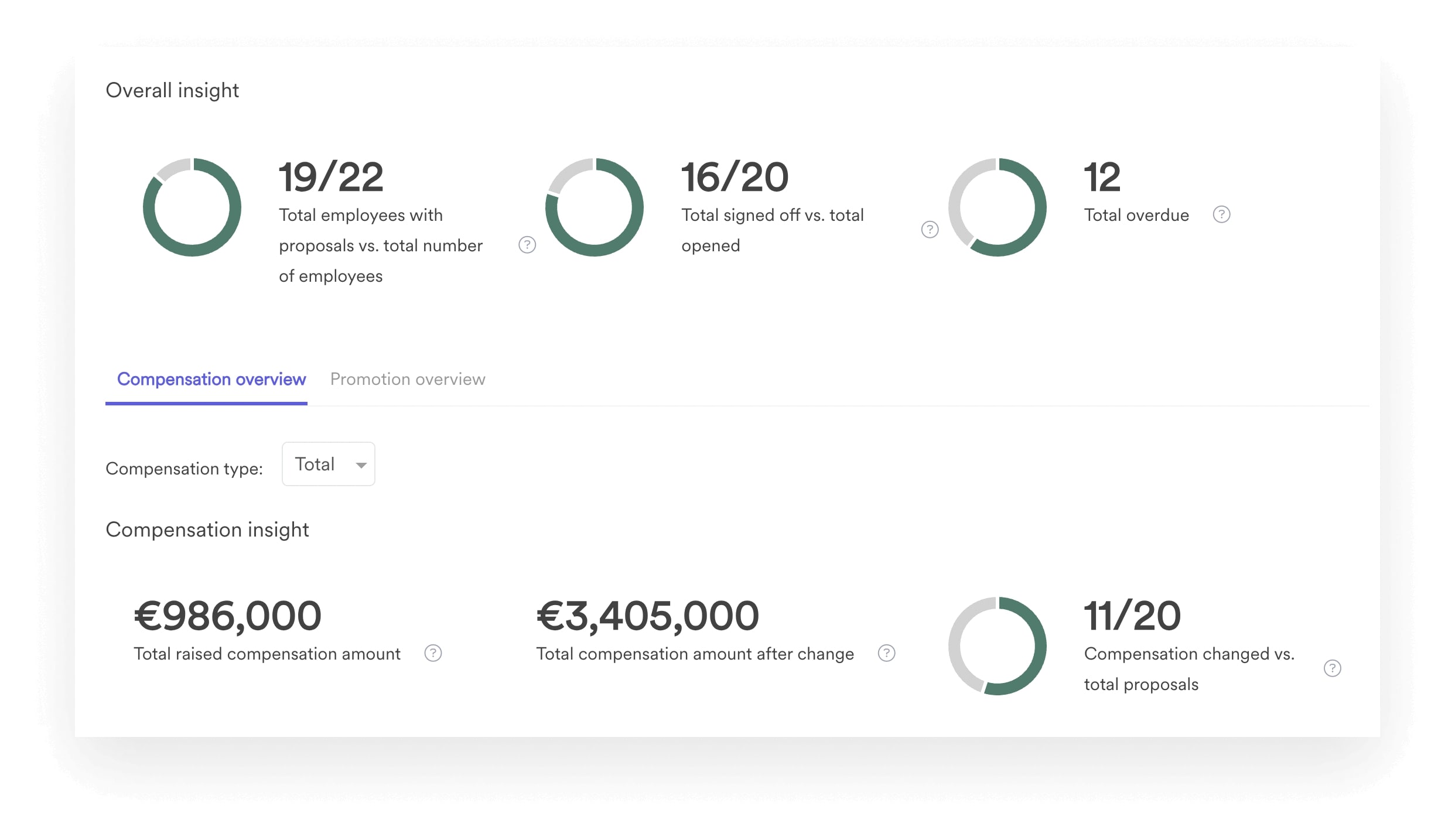
The performance bonus isn’t just about issuing incentives. You should be strategic and creative with your bonuses to motivate and reward your people — and you need a system in place to help you track the success of your performance bonus plan.
As a holistic people enablement platform, Leapsome can help you measure the impact of your bonuses on employee engagement and determine what drives employee performance and what doesn’t. Our Compensation module allows you to automate salary reviews, analyze company-wide pay data, compare it against Mercer-powered benchmarks, and update them to be more competitive. It also integrates with Leapsome Surveys , making obtaining employee feedback on your compensation packages easier.
Unlock the power of Leapsome to leverage pay more effectively, enhance employee engagement, optimize performance, and stay competitive in the face of a challenging economic outlook.
💪 Make your compensation plan work harder for you Take advantage of Leapsome for comprehensive compensation management planning and scaling — including setting up performance-based bonuses. 👉 Book a demo
Leapsome Team
.png)
Related Articles
.png)
Performance & compensation management | Should salaries be tied to reviews?

Salary increment | Definition & guide to negotiating fairly

How salary benchmarking helps you pay fairly & retain top talent
Ready to upgrade your people enablement strategy.
Exlpore our performance reviews, goals & OKRs, engagement surveys, onboarding and more.
.webp)
The #1 rated HR platform for people enablement
Schedule a demo to find out why leading companies choose Leapsome, the intelligent HR platform that empowers managers to develop, align, and engage their teams.
- Get AI-powered recommendations 🪄
- Save countless hours with automations ⏱️
- Learn from industry best-practices and benchmarks 📊
1,600+ forward-thinking companies choose Leapsome

Schedule a demo
Our friendly team will be in touch right away!
.png)
Mitarbeiter entwickeln mit Leapsome
Stärken Sie Mitarbeiter-Engagement und Erfolg Ihres Unternehmens - wie andere führende Marken.
Interesse an Leapsome?
Unsere Produktexperten zeigen Ihnen gerne unsere Plattform oder eröffnen einen Account.
15 Performance Bonus Examples and Tips for Implementation
The types of performance bonuses and incentives companies can use to reward their top performers..

Contributing Experts
Share this article, subscribe to weekly updates.
What is a Performance Bonus?
A performance bonus is a monetary reward given to employees beyond their regular salary, contingent upon achieving certain predetermined goals or benchmarks. These bonuses serve as an incentive for employees to exceed expectations. In addition, such bonuses signify an organization's recognition and appreciation of hard work.
In today's competitive business environment, organizations are perpetually on the lookout for methods to inspire, motivate, and retain their workforce. Among the various strategies employed, performance bonuses stand out as a prominent tool in many employee rewards programs .
Stay with us as we delve deeper into the nuances of performance bonuses, providing you with real-world examples, and sharing invaluable tips for implementing them seamlessly within your organization.
In This Article
Types of performance bonuses.
There are various types of performance bonuses companies can incorporate into their rewards program, each tailored to different organizational needs and goals.
Some are performance incentives, structured around specific targets, like sales quotas or project completions. Others may be tied to broader company-wide achievements, such as profit margins or customer satisfaction ratings.
The common thread is that they all incentivize outstanding performance. Take the example of Wall Street, where annual bonuses based on individual, departmental, and firm-wide performances can reach staggering sums.
Or consider the tech sector, where companies like Google and Apple offer stock options or grants as part of their bonus structures, aligning employee interests with the company's long-term success.
We can break performance bonuses down as follows:
- Year-End Bonus: An annual bonus typically awarded at the end of the fiscal year, based on individual or company performance.
- Quarterly Bonus: Bonuses awarded every three months, often based on quarterly performance goals and results.
- Sales Commission: A percentage of sales revenue earned by salespeople, encouraging them to sell more and meet targets.
- Profit-Sharing Bonus: This is a company-wide reward where employees receive a share of the company's profits based on a predetermined formula or allocation. Typically, a predetermined percentage of profits is set aside to be distributed among employees, either equally or based on their salary level.
- Gainsharing: This method focuses on improving productivity and efficiency. When cost-saving measures result in financial gains, those savings are shared with employees, rewarding them for their efforts in improving operations.
- Spot Bonus: Unexpected, on-the-spot rewards given for exceptional performance or contributions. Unlike end-of-the-year or quarterly bonuses, which are generally planned and structured, spot bonuses are spontaneous and awarded at the discretion of managers. They are given "on the spot" to recognize immediate and exceptional performance, such as going above and beyond in a specific task or situation. A holiday bonus, given before an employee goes on leave, is a well-appreciated example of a spot bonus.
- Project Completion Bonus: A bonus given for successfully completing a specific project or task within a certain timeframe.
- Performance-Based Salary Increase: Rather than a one-time bonus, this involves a permanent merit increase in base salary based on performance.
- Customer Satisfaction Bonus: Rewards based on customer feedback or satisfaction scores, often used in customer service or retail industries.
- Employee Referral Bonus: Employees receive bonuses for referring qualified candidates who are hired by the company.
- Attendance Bonus: Rewarding employees for maintaining good attendance records or meeting punctuality standards.
- Team or Departmental Performance Bonus: A bonus given to an entire team or department for collectively achieving specific goals or targets. This promotes collaboration and teamwork. For example, if a project team delivers a project under budget or earlier than scheduled, the team members share a performance bonus pool based on that extra effort.
- Longevity or Retention Bonus: Incentive compensation for employees who have been with the company for a certain number of years.
- Stock Options or Equity Grants: Employees receive the option to purchase company shares at a discounted rate or are granted company stock as a performance bonus.
- Milestone or KPI Bonus: Rewards given for achieving significant milestones, such as hitting a revenue target, key performance indicator (KPI), or acquiring a certain number of clients. These can be tied to longer-term goals and can be given in the form of stock options or deferred compensation.
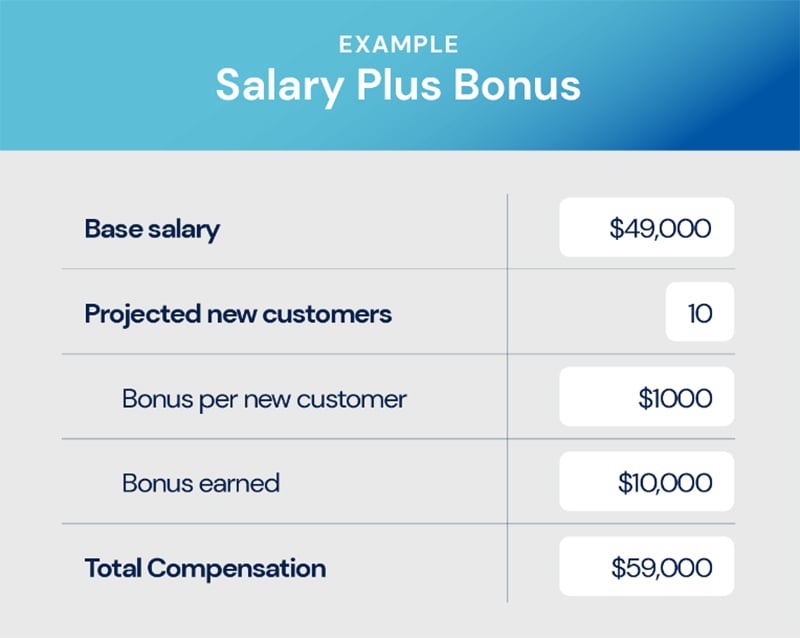
Implementing a performance bonus system or bonus plan, however, isn’t a straightforward task. It requires a deep understanding of company goals, human resources, clear communication with employees about expectations, and a fair, transparent process for evaluation and reward.
For starters, companies must be very clear about what triggers a bonus. Bonuses can be linked to KPIs, profits, or individual contributions.
A common structure is tiered bonuses. Here, employees can achieve different "levels" of bonuses based on their performance metrics. For instance, reaching 80% of a target might secure a smaller bonus, while achieving 120% may earn a significantly larger one.
Although receiving an unexpected bonus is a wonderfully positive experience, an opaque bonus structure can also have the opposite effect - where an employee expects a bonus and doesn’t receive one.
This can lead to disengagement and resentment towards leadership, Whether or not an employee receives a performance bonus should, therefore, be antedated based on continuous performance management and feedback.
Organizations must also strike a balance to ensure that bonus amounts motivate employees without fostering unhealthy competition or undue stress. A bonus trigger that is unattainable can hinder employee motivation.
Beyond bonus programs, companies also have a repertoire of other employee rewards at their disposal, from recognition programs to discretionary bonuses, and non-monetary incentives . These comprehensive reward systems play a pivotal role in not just motivating employees, but also in shaping the culture and trajectory of an organization.
6 Real-World Performance Bonus Examples
Here are examples of effective performance bonus plans used in real organizations to reward top talent:
Google – Peer Bonus
Google recognizes the importance of teamwork and encourages its employees to appreciate each other. The company has a " Peer Bonus " system, where any employee can nominate another for a bonus.
While the nominator’s manager must approve the bonus, it's noteworthy that this system allows co-workers to recognize each other's contributions directly. The amount, though undisclosed, serves as an acknowledgment of collaboration and support among peers.
Goldman Sachs – Discretionary Year-end Bonuses
Investment banking giant Goldman Sachs is renowned for its generous year-end bonuses , which are linked to the company's overall profitability and an employee’s performance.
These bonuses can vary widely and can be many times an employee's base salary, especially for high-performing individuals in key roles. While the exact figures are closely guarded, these bonuses are a hallmark of the finance industry.
Apple – Retention Bonus
At certain times, to retain critical talent, Apple has been known to offer retention bonuses . For instance, following the acquisition of Beats in 2014, Apple offered Beats employees retention bonuses to ensure a smooth transition and maintain continuity.
The exact amounts can vary but serve as an incentive for employees to stay with the company during crucial periods.
Pfizer – Sales Incentive Plan (SIP)
Like many pharmaceutical companies, Pfizer offers a Sales Incentive Plan (SIP) to its sales representatives. This bonus is based on individual sales achievements and the overall performance of the drug they represent. If a sales rep exceeds targets and the drug does well in the market, the bonus can be a significant boost to their annual income.
IBM – Project Completion Bonus
For certain roles, especially in project-based environments like IT development, IBM has been known to offer project completion bonuses .
These bonuses serve as an incentive for the timely and effective completion of projects, ensuring teams stay motivated throughout the project lifecycle.
Tesla – Milestone-based Bonuses
Elon Musk's compensation package from Tesla is a prominent example of performance bonuses on a grand scale .
His compensation plan is structured around milestones tied to both the company's market cap and operational targets. As Tesla reaches these milestones, Musk is eligible for stock option awards, potentially making this the largest performance bonus in corporate history.
While the nature and amount of performance bonuses can vary widely depending on the company and industry, they serve a universal purpose: to motivate, reward, and retain valuable employees .
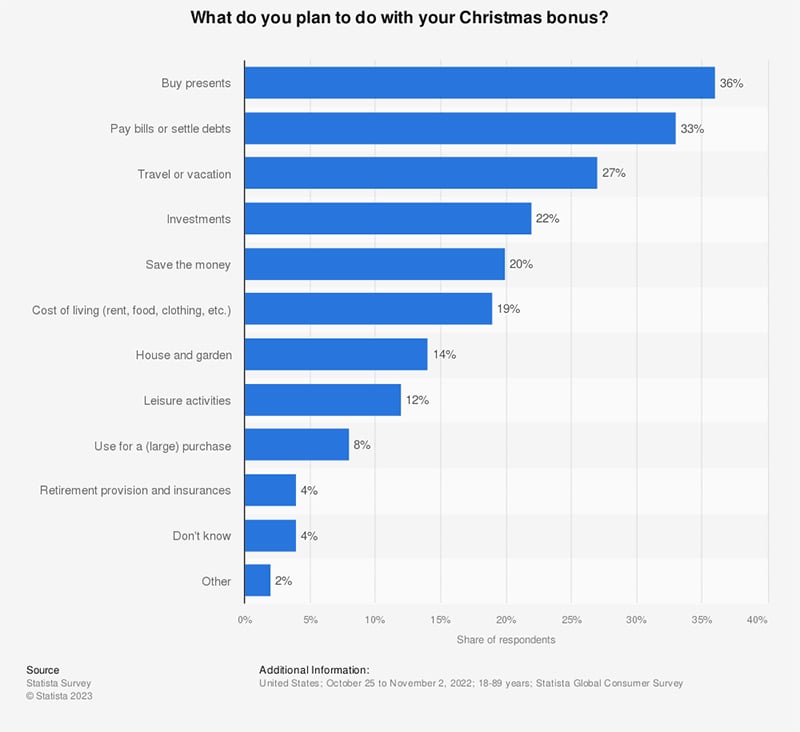
Tips for Implementing Performance Bonuses
Performance bonuses can be a powerful tool to motivate and reward employees. However, it's crucial to design a bonus structure that aligns with the company's objectives, promotes desired behaviors, and ensures fairness and transparency.
Different approaches cater to various business environments and cultures. Finding the right fit for your team can drive both employee satisfaction and organizational success.
Align with Organizational Goals
Ensure that the performance bonus structure and strategy complement the company's overall objectives. The metrics you track to determine bonus allocation should be aligned with these objectives and clear to employees.
If you aim to prioritize customer satisfaction, for instance, link bonuses to customer feedback scores that are visible to the teams and individuals who will benefit from a high score.
Keep it Transparent
Employees should fully understand the performance bonus structure.
Clearly define the success criteria, the evaluation process, and the potential payout. This transparency will motivate employees, reduce ambiguities, and foster trust.
Set Clear Performance Metrics
For a bonus system to be effective, the performance metrics should be Specific, Measurable, Achievable, Relevant, and Time-bound (SMART).
Clearly defined criteria ensure that bonuses are awarded based on merit rather than favoritism.
It is also critical that the success metrics you track are within the team or individual employee’s control to improve upon. If they have limited or no means of affecting their success, the promise of a bonus loses its efficacy.
In this sense, a company-wide bonus can only incentivize every team member when each individual has a clear understanding of how they contribute to the company’s overall success.
Ensure Flexibility
Business goals and environments change. Make sure your bonus system is adaptable to reflect changing priorities, market conditions, or company direction.
Hardworking employees should not lose out on bonuses due to macroeconomic factors beyond their control. It is better to adjust the size or nature of the bonus than to forego it completely.
Regular Feedback is Essential
Instead of waiting for an annual review, provide employees with regular, constructive and, ideally, positive feedback . This not only helps them align their efforts but also corrects course as needed, maximizing their chances of achieving the bonus.
Differentiate between High and Average Performers
A bonus strategy should sufficiently differentiate rewards between high, average, and below-average performers. This not only motivates the high performers but also encourages the average and below-average ones to step up their game.
Avoid a One-Size-Fits-All Approach
Remember that roles within an organization can be vastly different. A salesperson's performance metrics might differ from those of a software developer.
Customize bonus criteria based on role-specific performance indicators.
Guard Against Unintended Consequences
Performance bonuses can sometimes lead employees to focus excessively on bonus-related tasks, neglecting other essential duties.
Ensure the bonus structure encourages holistic performance rather than an unhealthy obsession with a few metrics.
Promote Teamwork
While individual bonuses are essential, consider incorporating team-based bonuses as well. This can promote collaboration, shared goals, and a sense of camaraderie among employees.
Regularly Review and Update
At least annually, review the effectiveness of the bonus system.
Collect feedback from managers and employees, assess the strategy's impact on performance, and make necessary adjustments.
Consider the Financial Implications
Always keep the organization's financial health in mind.
Performance bonuses should be sustainable and not strain the company's resources. It's also essential to be prepared for scenarios where a large number of employees meet their bonus criteria.
Communicate Regularly
Always keep clear lines of communication open . Whether it's about changes in the bonus structure, clarifications on performance metrics, or feedback about the system, ensure there's a platform for open dialogue.
Celebrate Achievements
When employees earn their bonuses, celebrate their achievements. Public recognition can be as motivating as the financial reward itself.
Stay Committed
Once you've implemented a performance bonus strategy, stay committed to it. Regularly skipping or reducing bonuses without clear reasons can demotivate employees and erode trust.
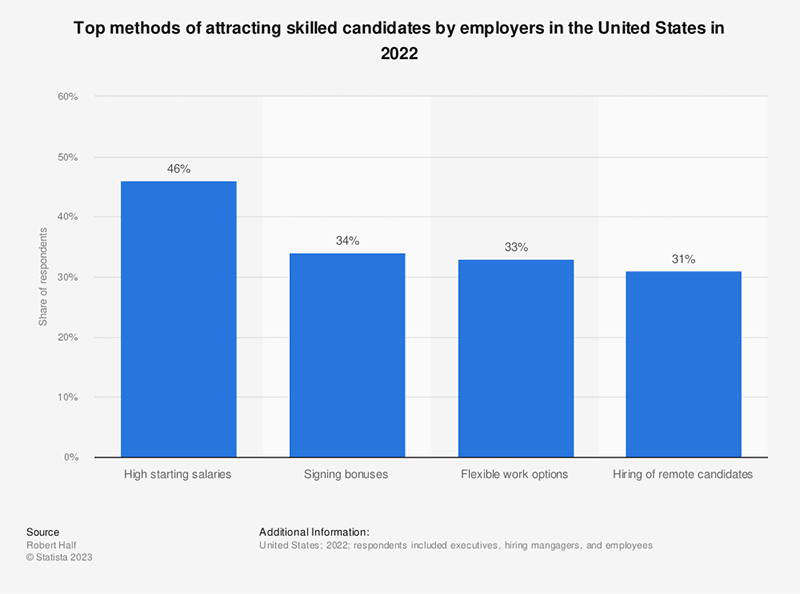
Performance Bonuses vs Other Employee Rewards
An effective performance bonus strategy is more than just financial incentives. It's a comprehensive approach that recognizes, rewards, and motivates employees, driving both individual and organizational success. Properly implemented, it can elevate performance, enhance morale, and promote a culture of excellence within the organization.
Employee rewards also encompass a diverse array of non-monetary and intrinsic benefits that cater to the varied needs and preferences of the workforce. Here's a closer look at some popular employee rewards that complement your performance bonus strategy.
Recognition Programs
Often, a simple acknowledgment can make all the difference. Employee of the Month, spotlight awards, and shout-outs in company newsletters or on digital platforms can boost morale. Recognizing milestones, such as work anniversaries or project completions with words of appreciation also plays a role in making employees feel valued.
Flexible Working Arrangements
With the advent of technology and the rise of remote work culture, flexibility has become a sought-after reward.
Offering options like telecommuting, flexible work hours, or compressed workweeks can increase job satisfaction and loyalty.
Note, however, that 74% of workers would rather have a $50k bonus than three-day weekends .
Professional Development
Investing in employees' growth is a win-win.
Subsidized courses, workshops, or certifications; attending conferences; or providing in-house cross-training sessions can motivate employees and enhance their skill set, benefiting the organization in the long run.
Health and Wellness Benefits
A healthy employee is a productive one. Companies can offer gym memberships, wellness programs, mental health support, or even organize periodic health check-ups.
Initiatives like yoga sessions, meditation workshops, or health awareness talks can also make a difference.
Additional Paid Time Off (PTO)
Providing extra vacation days, sabbaticals, or other types of PTO can be an attractive reward. It gives employees a chance to recharge, pursue personal interests, or spend more time with family.
Gifts and Vouchers
On special occasions, birthdays, or other notable achievements, employees can be gifted vouchers, tickets to events, or customized merchandise.
These tangible rewards, though not as permanent as some other benefits, bring immediate joy and a sense of appreciation.
Stock Options
For longer-term rewards, companies might offer stock options or shares. This not only boosts employees' sense of ownership in the company but can also be financially rewarding as the company grows.
Employee Assistance Programs (EAPs)
Employee assistance programs provide support for various personal challenges an employee might face, be it legal advice, mental health concerns, or family issues.
By ensuring that employees have a reliable support system, companies demonstrate genuine care for their well-being.
Social Activities and Team Building
Team building activities such as organized social events, team outings, or retreats can serve as both a reward and a tool for strengthening team cohesion. This can range from a simple team dinner to elaborate off-site events.
Personal Growth Opportunities
Offering avenues for personal growth, such as book clubs, language learning courses, or hobby-related workshops can make employees feel cared for beyond their professional roles.
While performance bonuses are impactful, they are just one facet of a holistic employee reward system. It's worth noting that non-monetary rewards, like recognition, career development opportunities, and a positive work environment, play a vital role in shaping an employee's overall experience and satisfaction.
A holistic approach to employee rewards, which takes into account both professional and personal aspects of an individual's life, has the potential to significantly improve employee satisfaction, engagement, and retention. Companies that are forward-thinking in their rewards policies stand to gain the most in today's dynamic business environment.
Final Thoughts on Performance Bonuses
In a dynamic business landscape, performance bonuses serve as a potent tool to motivate, reward, and retain top-performing employees. By tailoring financial rewards to tangible achievements or benchmarks, organizations can foster a culture where effort and results are directly linked to additional compensation.
As we've seen, there are multiple types of performance bonuses – from those tied to individual achievements, team-based successes, and even company-wide milestones.
However, the key to a successful performance bonus system lies in its thoughtful implementation and the comprehensive range of rewards that underpin it. In essence, a well-rounded approach to employee rewards can help organizations strike the perfect balance between immediate financial incentives and long-term career growth, creating a motivated and committed workforce ready to drive the company's vision forward.
Danielle Jones is an attorney, author, people systems expert, and HR consultant based in Phoenix, Arizona.
Danielle is CEO of Pinnacle Consulting Services , which offers fractional Chief People Officer and Head of People services to small and growing businesses nationwide. She has been a people leader for over ten years and a business owner for over six years, with executive experience internationally.
Reach out to Danielle for support in developing your employees and growing your business here .
Related posts

The Business Case for Conducting Skills Gap Analysis on Your Employees

Strategies to Manage HR in the Healthcare Industry

HR Strategy: What Is It and How to Develop Yours (Step-by-Step)
Join 35,000 hr tech nerds who get our weekly insights.

Popular HR Software Categories
The 17 best applicant tracking systems (ats) in 2024, 15 best employee rewards programs (2024), the 11 best hris systems (2024), best performance management software for 2024, 15 best employee engagement software tools in 2024, best employee scheduling software for small business (2024), 11 best hrms software solutions in 2024, best payroll vendors (2024), the 9 best hcm software to manage your hr needs in one place, 10 best applicant tracking systems for small business (2024).

Understanding Compensation Management: Bonus Plans

Products used
Bonus plans are one of the most powerful levers a company has to direct the behavior of employees towards specific goals. They also can be a competitive differentiator to make your company more attractive for recruitment. It is critical that bonus plans, often referred to as variable or short-term incentives, are designed carefully and administered smoothly.
Do you have the tools to create bonus plans that incentivize the right behaviors? Are you able to create and administer plans that will be optimized for different roles and geographies? Can you accurately predict what those plans will cost? Can you ensure they will be executed correctly and efficiently? These capabilities can have a big impact on your company’s success in meeting its goals.
In this installment of our ongoing series, we look at the key elements that go into managing bonus plans successfully, and what is required of a compensation management system.
Getting the pieces in place
Volumes have been written about how to design bonus plans for optimum results, and we won’t pretend to be able to describe all the intricacies in a blog. Our focus here is on what you need to consider when assessing the technology that will be needed to manage bonuses effectively, especially in large organizations.
Structuring the plans
Planning for bonuses is quite a bit different from salary planning, since bonuses typically are driven directly by performance results, and often measured by multiple key performance indicators (KPIs). A simple bonus plan might be based only on company performance during the period, or may even be at the discretion of management. More sophisticated plans may have KPIs that include company, team, and individual components, for example:
- Company goals revenue, margin, growth rate, new customer acquisition, customer retention, customer satisfaction, share price, etc
- Team goals related to the nature of the team: issues resolved by customer service, account footprint expansion by sales, leads generated by marketing, product quality measures by manufacturing, etc.
- Individual goals based on the person’s role, perhaps including performance rating, productivity, teamwork, etc.
By mixing these elements, you motivate the employee to accomplish their own specific goals while being a team player and working for the overall success of the company.
Data makes all the difference
When planning your goals, make sure to set targets that you have the data to measure. Will you need to perform any calculations to get the data that you need? Do you have the right tools in place to track your KPIs? How will monitoring those KPIs help you achieve specific objectives?
Calculating an employee’s bonus, then, may require evaluating data from a variety of sources, depending on the metrics being used to determine the bonus payout. It becomes important to identify the sources of information needed to calculate bonuses and to ensure you can pull that data into the compensation system in a usable fashion. So, understanding your data environment is an important part of developing a bonus plan.
Modeling is a must
Bonuses can be used to reward very specific objectives, which will vary based on role, location, and company strategy. Even within one plan, there can be many moving parts: multiple metrics, achievement level for each, company funding level, etc., making it hard to accurately assess what the plan will actually cost. To plan accurately and forecast the true cost of a bonus plan, you must make assumptions and predictions about the achievement of the objectives that drive the payouts. This requires the ability to run simulations using different sets of assumptions—“what-if” scenarios—and see what bonus payments would result from different models, such as optimistic, pessimistic, and realistic.
Multiple plans add complexity but drive results
If you work with a large organization, you may have an additional layer of complexity to consider. The larger the size of the company, the more layered and standardized the bonus system should be to make it simple to scale. And, a company may in fact have many different bonus plans that vary by division, department, location, team, role, title, etc., or one basic plan with many variations such as different percentages assigned to different elements to weight them differently. While having a variety of plans adds another layer of complexity to compensation management, the business results are usually well worth it. Bonus plans that are tailored to a function and market can be highly effective in driving the individual and team behaviors needed to achieve collective success.
The right tools are essential
By now, if any of this information is new to you, creating a structured bonus plan must feel like a daunting task. But it doesn’t have to be with the right software. The problem that most companies face is their reliance on spreadsheets or basic HR software that can’t do what they need. Managing many bonus plans with multiple KPIs that require gathering and analyzing data from across the company can easily outrun the capabilities of these makeshift solutions. With the right compensation management system, however, the payoff in performance can be well worth it. For example, some beqom customers have upwards of 100 bonus plans, precision-tooled to drive results.
Don’t forget Finance
Accruals, accruals, accruals. Because the total bonus amount can be a large but variable figure, it is important for planning purposes to forecast bonus payouts as accurately as possible. This is an accounting necessity, as Finance must accrue for bonuses in its financial reporting.
Key system capabilities for plan development
To get the most out of your bonus programs, here are some of the capabilities to look for in your compensation technology. Your system should be able to:
- Manage multiple bonus plans and/or variations of plans
- Calculate and track any number of KPIs to enable metric-driven plans
- Model and simulate different plans to see the impact
- Manage the data needed to calculate KPI attainment
- Provide the ability to accurately forecast variable pay accruals
Ok, I've got my bonus plan. Now what?
The best-designed plan is meaningless unless it can be executed smoothly and accurately. Like salary reviews, the process of administering a bonus typically entails managers allocating bonus amounts to team members from a pool of money. If the company has KPI-driven plans and an automated compensation system, the system may automatically propose bonus amounts based on predefined business rules and the metrics data.
Also like salary reviews, the amounts allocated by managers must go through an approval process based on a predefined hierarchy of approvers. At each step, the amount can be validated, rejected, or modified, and an explanation given. The process should be traceable through an audit trail. This is useful for compliance with Sarbanes-Oxley and other regulations which require accountability and transparency around compensation decisions.
Key capabilities for administering bonus plans
For success in administering your bonus plans, here are some additional capabilities to look for in your compensation management solution:
- Manager self-service to participate in the bonus allocation process
- Availability to managers of metrics and calculations used to calculate team bonuses
- Ability to adjust proposed amounts
- Ability to see total compensation and history for each team member
- Visibility of budget and ease of allocating the budget pool
- Flexible approval hierarchies to match the way the organization operates
Bonus success
Variable incentive plans can be the engine that drives company performance. The right compensation management technology can help you to design and deliver bonus plans that deliver results.
If any terms in this article are unfamiliar to you, don’t worry. We have a resource that will help you navigate this and other compensation management terminology. Bookmark our Compensation Glossary or download a copy to access it offline.
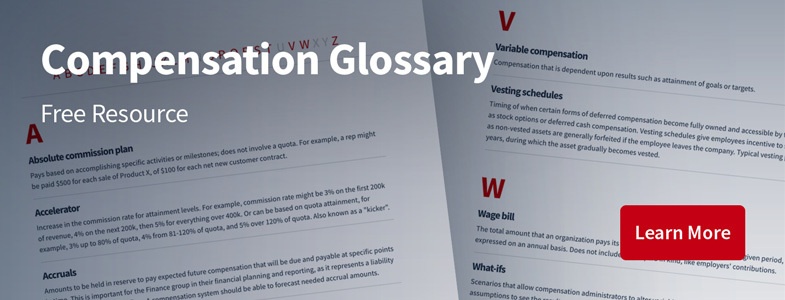

How to Create an Effective Employee Bonus Plan
Employee bonus plan basics, why create a bonus plan, what to consider when designing an employee bonus plan, check out eddy’s employee bonus calculator, common types of employee bonuses.
- Signing Bonus : A bonus paid to an employee when he/she commits to come and join your company. Usually used to incentivize a highly talented employee or executive.
- Retention Bonus: A bonus to retain an employee during a merger, acquisition, or company management shakeup. In order to avoid losing key people during a transition period, companies will pay a bonus to incentivize them to stay.
- Referral Bonus : This is a bonus that rewards a current employee for referring a job candidate who the company ends up hiring. Employee referrals are often the best source of qualified candidates, so it’s beneficial to reward employees who refer friends or former colleagues.
- Annual Bonus: A bonus that is paid annually (usually near the end of the calendar or fiscal year) that rewards an employee for hitting certain targets. It may also reward an employee if the company hits its goals or targets.
- Quarterly Bonus : A bonus that is paid quarterly (usually mirrors the fiscal quarter breaks) that rewards an employee for hitting certain targets, or for the company hitting its targets.
- Discretionary Bonus : This type of bonus is left to the discretion of a manager or executive. Typically, a budget will be set aside for bonuses to be paid, and the manager or executive will determine the amount to be allocated to each employee based on performance or other criteria. As the name explains, it is discretionary, and therefore is not tied to a specific plan or promised reward.
- Ad Hoc Bonus : This is a “spur-of-the-moment” type incentive that is promised or given when an employee goes above and beyond for a task or project. These bonuses are sometimes promised before the target is hit (i.e. “The next person to make a sale gets an extra $100 on their commission check) or given to express gratitude after the accomplishment (i.e. “Because you worked so hard on this project, we wanted to give you an extra $1,000).
- Profit-Share: Some organizations allow employees to share in the profits of the company. This is motivating to employees who will focus on activities and projects that increase company profits because they know they’ll be able to benefit from them. These plans usually have a predetermined percentage of profits that will be shared with employees. Those profits can then be shared on a discretionary or formulaic basis.
- Team Bonus: Occasionally, organizations will decide to reward teams instead of individuals. This helps teams come together, synergize, and accomplish more than they would individually. Rather than just reward individuals, the entire team is rewarded and incentivized equally.
Choosing the Plan That’s Right for Your Company

- Eddy Overview
- People Management
- Time Tracking
- Training Tracking
- HR Encyclopedia
- HR Mavericks Podcast
- Help Center
- Contact Support
Informasi Lengkap Tentang Situs Toto Togel CERUTU4D
Cerutu4d bandar togel dana online terbaik hadiah terbesar 4d 10 juta bet 100 perak terpercaya 2024. Cerutu4d juga menyediakan pasaran togel terlengkap seperti pasaran togel sydney, singapore, hongkong, toto macau dengan pelayanan customer service terbaik dan juga ramah untuk membantu kendala maupun keluhan dari para player yang bermain di bandar togel online cerutu4d ini. Cerutu4d juga menyediakan berbagai pilihan bettingan seperti bet full, bolak balik, prize123, dan juga diskon. untuk soal keamanan dan kenyamanan cerutu4d tidak perlu di ragukan lagi karena sudah masuk langsung di bawah naungan IDNPLAY & PAGCOR jadi sudah pastinya aman bagi para player yang mau bermain di bandar togel dana online terbaik ini.

How To Set Up An Employee Bonus Plan
Last Updated on February 23, 2023 / Benefits & Compensation

HR Question:
I am having trouble motivating my employees to do more than just the fundamental functions of their job. Could an employee bonus plan help? And if so, how do I set this up?
Yes! While some people are driven solely by their own internal motivation, many behaviors and accomplishments are encouraged and strengthened by external rewards, prizes, or incentives. Think about your own behavior. Do you eat healthy all week and reward yourself with a sweet treat on the weekend for a job well done? Or is there a meaningful work project that would suddenly become more tempting to tackle if there was a reward for knocking it out of the park?
“Behavior that is motivated by a desire for reinforcement or incentives” is known as the Incentive Theory of Motivation . From this, we learn that providing the right external rewards can drive human behavior. In a work setting, incentives can help to set your employees’ course of action and encourage them to perform projects or tasks that might be above and beyond their daily work responsibilities, stretch and grow them in areas that will further benefit the company, and drive advancement and change in your organization.
While there are a variety of ways to incentivize employees, one of the easiest and most impactful ways is a financial incentive or bonus. Not all individuals are motivated by money, and you have to know your employees well to know if and how much money will actually be motivating, so it might prove to be beneficial to conduct an employee survey to understand your employees’ motivators.
There are many creative ways to structure bonuses to incentivize the behavior you want to see. The Economic Research Institute provides a description of the most common types of bonuses used by employers in their article, “ How to Calculate Employee Bonuses. ” We are going to focus the remainder of this article on the performance bonus.
How to establish a performance bonus plan
To implement a performance employee bonus plan in your organization, we recommend the following steps:
- Work with your company leadership team and chief financial officer to establish a budgeted amount of money that will be available at the time bonuses will be paid out.
- Determine who is eligible to participate in the bonus program. Remember that if you include non-exempt employees, the bonus amount will have to be added to the base hourly rate in the calculation of overtime for that time period.
- Define the time period that the bonus will cover and how often it will be paid out (i.e., monthly, quarterly, semi-annually, or annually).
- Establish maximum bonus amounts for participants – will it be a percentage of their salary or a fixed amount? Will this vary based on the pay grade their job is assigned?
- Prepare a policy with all of this information and communicate the program to eligible employees.
Setting goals for bonus payout
Once you have established the structure of your bonus program, the next step is the MOST IMPORTANT one in the process – setting goals. Work with your employees to set stretch goals that will motivate them to perform their essential functions better, improve processes, learn a new skill, or complete specific projects. These goals should align with both the organization’s annual goals and the department’s goals for the year.
As you align your bonus plan payout with your company, departmental, and individual goals, you may want to allocate percentages of the bonus to each of these areas. By tying the bonus payout to multiple relevant factors, you can set minimum expectations for the financial and performance metrics that need to be met for a full payout. This also provides flexibility to offer a partial payout if certain measures are partially met.
For example, you could structure your employee bonus plan like this:
1. Company Goal – A financial goal the company must meet/exceed – 25% of the eligible bonus amount 2. Departmental Goal – A goal the department must meet/exceed measuring quality, performance, customer service, financials, safety, etc. – 25% of the eligible bonus amount 3. Individual Goals – Two individual goals measuring projects, training/development, performance, safety, productivity, attendance, etc. – 50% of the eligible bonus amount
Once the goals are set, your next critical priority is to follow up on these goals. Whether you are setting a bonus goal for the year or for the month, meet with your employees at regular intervals and discuss their progress on their goals. Assure that the goals are attainable and that they continue to make sense as time moves forward. Company leaders should also provide updates on company and departmental goals so employees have a sense of organizational progress and success.
Finally, at the end of the bonus period, meet with your employees to assess their progress in reaching/exceeding the goals. Reward those goals completed at 100% and lessen the reward if the goals were not fully met. Be sure to assess the effectiveness of your bonus plan at the end of the year and tweak it accordingly before rolling it out again next year.
Thank you to Lorrie Diaz, MS, Sr. HR Business Advisor, for contributing to this HR Question of the Week.
Clark Schaefer Strategic HR have the answers to all of your tough Benefits and Compensation related questions. Whether you need an analysis of your current benefit offerings or are looking to create a cost-effective recognition and rewards program, Strategic HR can do the job. Please visit our Benefits & Compensation page for more information or Contact Us .
You might also like
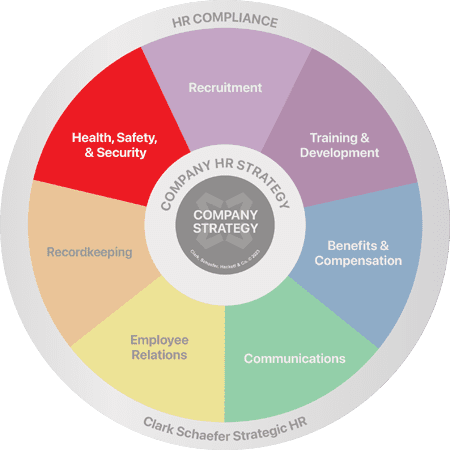
NEWSLETTER DISCLAIMER
The recommendations and opinions provided by Strategic HR and its staff are advisory only and are based on general human resource management fundamentals, practices and principles, and are not legal opinions or guaranteed outcomes. This information is provided with the understanding that the user assumes the risk of verifying information used from this site when interpreting it for their own use. We strongly recommend, as part of a team approach to management, that companies consult with their legal counsel to address specific legal concerns related to human resource issues.
Clark Schaefer Strategic HR 10856 Reed Hartman Hwy Suite 225 Cincinnati, OH 45242
513-697-9855 [email protected]
- HR Services
- Newsletter Sign-Up

Clark Schaefer Strategic HR is recognized by SHRM to offer Professional Development Credits (PDCs) for SHRM-CP® or SHRM-SCP® recertification activities.
The information provided on this website does not, and is not intended to, constitute legal advice; instead, all information, content, and materials available on this site are for general informational purposes only. Readers of this website should contact their attorney to obtain advice about their particular situation and relevant jurisdiction. This website contains links to other third-party websites. These links are only for the convenience of the reader, user or browser; Strategic HR does not recommend or endorse the contents of the third-party sites.

You are using an outdated browser. Please upgrade your browser .
Motivating Your Team: Bonus Plan Examples to Consider
Written by Salary.com Staff
November 10, 2023

Motivating and engaging the team is one of the most vital tasks of any company leader. While pay is a factor , a strategic bonus plan can drive peak performance. The key is to find the right bonus plan examples suitable for the team and company culture.
There are diverse bonus plan examples to consider, each with pros and cons. With the right bonus plan in place , the team becomes more motivated and invested in the overall success of the company.

Bonus Plan Examples Based on Skills
Bonus plan examples based on skills reward employees for developing and using abilities that benefit the company.
- Performance-Based Bonus
A performance-based bonus plan provides incentives for meeting key performance indicators (KPIs) . For example, the company will award a bonus once a salesperson exceeds a sales target by 10%. Similarly, a customer service representative will receive a bonus for getting a high customer satisfaction score.
- Skill-Based Bonus
With a skill-based bonus, the company rewards employees for learning new skills or improving existing ones. For instance, a programmer earns a bonus for becoming certified in a new coding language.
- Competency-Based Bonus
A competency-based bonus rewards the development of skills and knowledge required for a specific job role. For example, a manager earns a bonus for completing leadership training.

Bonus Plan Examples Based on Individual Performance
Bonus plan examples based on individual performance are common and can be an effective way to motivate and encourage employees.
- Commission Plan
One approach is a commission plan , where employees earn a percentage of the total sales they generate. Sales representatives often thrive under this bonus plan model. It rewards their ability to close deals and generate revenue.
- Spot Bonuses
Certain companies offer spot bonuses , where managers can award cash bonuses on the spot for outstanding work. This is an excellent way to reinforce key behaviors and provide instant positive feedback and motivation.
In the end, the right plan depends on your company’s culture and objectives. But providing bonuses tied to results can energize your team and drive motivation in a powerful way.

Bonus Plan Examples Based on Team Performance
Bonus plan examples based on team performance motivate employees by tying rewards to key results. Here are some examples of team bonus plans:
- Revenue-sharing
A percentage of monthly revenue is set aside for the bonus pool. The company distributes the bonus among team members based on seniority, role, and performance. This plan rewards teamwork that generates top-line growth.
- Profit-sharing
The company allocates a percentage of monthly or quarterly profits to the bonus pool. The distribution of the team bonus relies on both team performance and individual efforts . This approach motivates cost-conscious behavior and a focus on bottom-line results.
Team members establish key performance indicators (KPIs) and metrics to achieve strategic goals. The company pays bonuses when the team meets KPI targets. For instance, a customer support team has target KPIs for customer satisfaction, call resolution time, and call volume.
Bonus Plan Examples Based on Project Completion
Bonus plan examples based on project completion are common in various companies. These include:
- One-Time and Completion-Based Bonus
One example is a spot bonus, where employees receive a one-time bonus for completing a major project. The bonus amount is determined by the project’s priority and impact. Another option is a completion-based bonus, where employees get a percentage of the project’s profit or cost savings.
- Project Milestone Bonus
Project milestones are another way to motivate teams. Upon completing key stages of a project, employees earn a portion of the total bonus. The closer the project gets to completion, the larger the milestones become. This helps keep teams focused on the final goal.
- Successful Product Launch Bonus
Other companies offer bonuses for launching new products or services. For instance, employees may get a bonus for a successful product launch to reward their efforts. The amount varies based on meeting revenue or customer targets after the launch.
- Retention Bonus
The company may offer a retention bonus upon project completion to encourage employees to stay. For example, employees may get a bonus 6-12 months after the product launches. This helps retain the knowledge and experience gained from the project.

Bonus Plan Examples Based on Company Profitability
One of the most common bonus plan examples is based on company profitability. As the company's profits increase, employee bonuses also increase. For example:
- Percentage of Company Profits
Employees receive a bonus that is a percentage of the company's net profits for the year. As profits increase, so do bonuses. This motivates employees to improve the company's bottom line, as they benefit from its success.
- Profit Sharing
The company allocates a part of its profits to a shared pool. They then distribute its profits among employees using a specific formula . Employees get a share of the profits, motivating them to help the company achieve its goals. Like the percentage of profits plan, profit sharing bonuses can fluctuate based on the company's performance.
- Gainsharing
Productivity gains and cost savings determine the bonuses. Employees who contribute to process improvement and cost reduction in their department receive a bonus. The bonus varies based on the impact of these improvements. Doing this motivates employees to improve productivity and reduce unnecessary spending.
- Employee Stock Ownership
Employees receive company stock as part or total of their bonus . They benefit if the company's stock price rises over time. This aligns employee incentives with the long-term success of the company. However, employees risk receiving little or no bonus if the stock price falls during the period.
Download the 2018 Turnover Report:

Download our 2018 Turnover Report to compare your organization's turnover rate with averages in your industry and geographic region. View national and regional numbers by industry for voluntary and total turnover, as well as five-year trends.

Download our white paper to further understand how organizations across the country are using market data, internal analytics, and strategic communication to establish an equitable pay structure.
Insights You Need to Get It Right

TAGS: CEO/CFO , HR Compliance , Human Resources
It's easy to get started.
Bonus Plans: How They Can Improve Employee Performance
In the business world, holding onto good employees can be tough, and in some cases, keeping them engaged can be even tougher. But there's one surefire way to create a positive change among your staff: incentives!
Employee bonus plans are types of incentives that are essential for recognizing extraordinary work by your employees and rewarding them for this in addition to their usual salaries. These programs, which can either offer cash incentives or other rewards, are usually put in place to motivate employees to work harder and create a sense of collaboration in the office.
But these bonus plans can be just as rewarding for businesses if they implement them correctly. In fact, you could improve employee performance, boost your profits, and retain your top employees.
In this guide, we'll explore:
- How this incentive program works and its impact on employee motivation
- The advantages of bonus plans
- How to craft an impactful bonus plan
What Is An Employee Bonus Plan?
Employee bonus plans are types of incentive programs that companies use to reward employees with cash bonuses (over and above their usual salaries) or additional perks when they're doing exceptionally well at work.
The main goal of employee bonus programs is to motivate and make your employees feel valued for their hard work. It's a way to cheer them on and encourage them to work even harder. However, your employees will need to be made aware of the terms that you've written up for them to receive their rewards.
Generally, a company's bonus plans will set out the rules or conditions that employees need to meet to get their reward. For example, they may need to meet certain sales targets, complete important tasks, or take on 'bonus opportunities' to be eligible for the reward or bonus. This plan is then shared with your employees to ensure they know what their goals are.
Employee bonus plans are essential for creating a more collaborative and positive work environment. By offering more money or other rewards for outstanding performance, you can encourage your employees to go above and beyond their normal work obligations. Of course, there are also several benefits that companies can glean from this type of incentive program (but more on that below...).
The Impact Of Well-Designed Bonus Plans
The impact of an effective employee bonus plan is multi-faceted. There are several advantages to implementing an employee bonus program, ranging from boosting employee satisfaction to increasing your business's performance and, ultimately, company profits.
In a nutshell, an employee bonus plan is a recipe for success that benefits both employees and companies - if you reward employees correctly with the right bonus percentage.
If you're unsure of how to calculate a profit sharing bonus , ShareWillow has got you covered, so be sure to check out some of our other articles on the subject.
Employee Loyalty and Retention
Well-structured employee bonus plans can positively impact the loyalty of your employees, which means they're more likely to stay with your company. When employees feel valued by receiving bonuses, they often feel more satisfied. In turn, they're less likely to look for employment elsewhere.
Additionally, the sense of being fairly compensated beyond an annual salary and recognized for their hard work fosters a stronger commitment to the business. This helps to lower voluntary turnover rates for better employee retention, which can save the company on recruitment costs when new staff needs to be onboarded.
Business Performance
An effective employee bonus plan can help motivate employees to work harder and contribute more to the company. This is because linking these rewards to employee incentive programs and their respective targets and goals creates a direct incentive for employees to strive for excellence.
In essence, it's like saying 'Hey, if you achieve this goal, you get a profit sharing bonus ', and you give them a reason to push themselves.
This motivation, which is boosted by the promise of additional rewards, can also lead to better individual and team performance. In a study by Gartner, it was found that a well-designed incentive program can lead to an increase in employee performance of more than 11% .
In the long run, a workforce that is actively encouraged and performs well can positively impact the overall performance and success of the company.
A good employee bonus plan plays an important role in boosting employee motivation and morale. Usually, these programs create a healthy sense of competition within the workforce. Employees aim to outperform one another to earn their rewards, and (if the employee bonus program is structured correctly) it can enhance their efficiency as individuals and as a team.
This team collaboration is also crucial to consider since everyone understands that working together is essential for achieving their collective goals. The collaborative spirit, coupled with the opportunity to earn a reward, improves communication in the workplace and creates a sense of camaraderie.
How To Design An Effective Bonus Plan
To create an employee bonus plan that truly works, it's important to incorporate some key components. Some of these components include:
Align It With Company Goals and Values
The cornerstone of a successful employee bonus plan lies in how well it aligns with the values and objectives of your company. By tying bonuses and business outcomes together, employees are then naturally motivated to channel all of their efforts toward achieving these goals.
For instance, if your company usually emphasizes innovation and staying ahead of the curve, you may want to consider using innovation-driven metrics in your bonus plan. This alignment not only reinforces your company's mission but also makes sure that any bonus that is given to employees contributes to the business's success.
Set Clear and Measurable Objectives
Next, you'll want to make sure that your employee bonus plan has clear, measurable, and achievable objectives.
Ideally, these goals should be quantifiable and your employees should be able to understand what the bonus plan means and entails. This will help to create a sense of clarity and direction for your entire company. In turn, your employees will all be on the same page and work as a collective toward well-defined goals, which will boost your performance metrics.
For example, if your company aims to boost sales, a measurable objective may be achieving a specific percentage increase in your overall sales revenue.
Prioritize Transparency and Communication
One of the most important parts of an employee bonus plan is transparency. Employees need a clear understanding of how the plan works, what criteria they need to qualify for their rewards, and how their contributions as individuals impact the outcomes of the plan.
But how do you do this?
- You'll need clear and consistent communication about the bonus plan to start fostering trust and employee engagement.
- You never want your bonus plan to be a source of confusion. Instead, you want to keep it as a positive incentive by regularly updating your employees on their progress, recognizing their achievements, and answering any questions or concerns your workforce may have.
Be Flexible
When it comes to bonus plans, flexibility is an important element since it can help your plans adapt to any changes in your business and the needs of your employees. Plus, things in the business world can just as easily change overnight and leave you rethinking the goals and objectives of your company.
Still, what do we mean by flexibility? Having a flexible plan means that you can easily change or adapt your conditions, goals, or any other information at any time (if it's necessary).
So, if something unexpected happens that affects your business's original goals, you can adjust the plan to make sure that it still makes sense. Additionally, this flexibility shows your employees that the company can easily respond to challenges, and it keeps the bonus plan motivating and exciting.
Types Of Bonus Plans
Employee bonus plans come in several shapes and forms, each with its own way of motivating and rewarding your workforce. Although there are numerous types of bonus plans, the most important ones to take note of include:
Performance-Based Bonuses
Performance-based bonuses are those that are tied to individual or team performance metrics. They also provide a very clear link between an employee's efforts and their potential rewards.
With this plan, you can set quantifiable and objective goals like achieving sales targets or completing certain projects. Using this approach also ensures that your employees understand what is expected of them, and still fosters motivation and a sense of accomplishment for them.
Profit Sharing Plans
Profit sharing plans are another popular type of bonus plan. Profit sharing involves sharing a portion of the company's profits among its employees. Instead of creating a link between efforts and rewards (like performance-based bonuses), it focuses on aligning the company's profitability with the interests of your employees.
After all, if the business is successful and brings in more profits, there is more to be shared among the workforce. It's a win-win scenario and creates an idea of a shared commitment to the company's success. The employees actually become stakeholders in the business's financial performance, forming a sense of ownership and teamwork.
Are you ready to unlock the potential of profit sharing? Then why not start with our free Profit Sharing Plan Template ? You won't regret it!
Spot Bonuses
Spot bonuses are on-the-spot rewards that are given to employees for their achievements or outstanding work. In contrast to the other types of employee bonuses on this list, these are immediate rewards and provide instant recognition to reinforce positive behavior within the workplace.
When you surprise employees with these types of bonuses, you can keep the motivational impact of your plans as high as possible. While this helps to make sure that good work is rewarded, it can be tricky to keep track of. If you don't distribute these rewards timeously, your employees may actually lose motivation.
Commission-Based Bonuses
Commission-based bonuses are more common in sales-based roles and correlate rewards directly with an employee's sales performance. Typically, salespeople earn commissions on top of their usual base salary for achieving (or exceeding!) their sales targets.
This approach can help motivate sales staff to actively contribute to the company's revenue growth as well as help employees align their own goals with the business's objectives.
Non-Monetary Bonuses
Non-monetary bonuses are exactly what they sound like - rewards that aren't in the form of money. Indeed, not all bonuses are financial. Instead, they may come in the form of extra vacation days, gifts, or professional development opportunities.
These non-monetary bonuses offer more varied incentives beyond standard cash rewards, and can actually cater to the diverse needs and preferences of your employees. This is a great way to take a more personalized and inclusive approach to recognition in the workplace.
Need Help Implementing Profit Sharing? Grab Our Free Template:
At ShareWillow, we're committed to helping companies create and manage their profit-sharing plans. Our passion lies in providing your business with the tools to align everyone in your team with shared goals, which will help to create an environment congruent with success and collaboration.
With our free Profit Sharing Template , you'll gain access to our user-friendly Excel template and informative PDF guide which will walk you through the process of creating an effective profit sharing plan.
Ryan is the founder of ShareWillow. He's passionate about helping businesses create incentive plans that motivate and reward employees. He previously built and sold PhoneWagon.
Profit Sharing Case Study
How a business owner can reduce her 401(k) profit sharing costs by $51,000
Profit Sharing Template Download
This profit sharing plan excel template has everything you need to build and launch a profit sharing plan.
Dividing the Pie: Revenue Sharing vs. Profit Sharing
Discover the ins and outs of profit and revenue sharing models, how they motivate stakeholders, and when to use them.
How to Qualify for 3% Eligible Revenue Sharing
Learn how to qualify for 3% eligible revenue sharing and maximize your earnings.
What Is Profit Sharing? A Definition and Overview
Discover what profit sharing is and how it works with our comprehensive guide.
Follow our journey as we build the best call tracking software
- How it Works
- Keep Benefits
- Product Features
- Flexible Compensation
- Using a Keep Bonus
- Signing Bonus
- Poaching Defense
- Annual Bonus
- Equity Alternative
- Performance Bonus
- Tuition Reimbursement
- Smarter Severance
- Construction
- Logistics + Transportation
- Hospitality
- Manufacturing
- Senior Care
- Compensation + Total Rewards
- Human Resources
- Finance Leaders
- Executive Leadership
- Legal Leaders
- Help Center
- Partner Program
- Resource Library
- Integrations
- Compensation
- Forgivable Loans
- Founding Story
The Ultimate Guide to Employee Bonus Structures
Table of contents.
- The Ultimate Guide to Employee Bonus Structures (2023)
- What is an Employee Bonus Structure and Why is it Important to Employers and Employees Alike
How Do You Set Up a Bonus Structure for Employees?
- What is a good bonus structure for employees?
Understanding Different Types of Bonus Structures & Examples
Creating an effective bonus plan that fits your organization’s needs, considerations for designing a bonus structure plan.
- Do bonus structures help with employee retention and engagement?
- Strategies for Implementing a New Employee Bonus Structure - How to determine bonuses for employees?
Tips for Evaluating the Effectiveness of Your Employee Bonus Plan
Keep your talent - with vesting cash bonuses.
Managing a successful business often requires finding the right balance between rewarding employees who do great work and ensuring that finances remain in check. It’s not an easy task, but it is one of the most important factors to consider when creating employee bonus structures. As an Finance leader, you understand more than anyone else how important it is to be thoughtful and deliberate when deciding on bonuses for your team. To provide some guidance and insight into how to effectively create employee bonus structures while keeping financials in mind, we have created this guide: The Ultimate Guide to Employee Bonus Structures. Here you will find helpful tips that break down each area of the process including conducting cost surveys; setting performance expectations; tracking success; factoring draw against commission rates reward timing; outlining core responsibilities; communicating clear parameters for bonus eligibility, plus much more!
What is an Employee Bonus Structure and Why is it Important to Employers and Employees Alike?
An employee bonus structure is a vital element in the ecosystem of a thriving workplace. Essentially, it serves as a strategic framework that employers can use to reward their workforce for meeting specific goals, excelling in their roles, or contributing towards overall organizational success. But why is it so crucial for both employers and employees alike? The answer lies in the balance this system strikes in fostering motivation, loyalty, and performance enhancement. Employers benefit from a more motivated and committed workforce, with higher productivity and a willingness to go the extra mile for the company's objectives. Meanwhile, employees feel valued and appreciated, perceiving a direct correlation between their efforts and financial rewards. In short, a well-designed employee bonus structure can act as the glue that binds people and organizations together, aligning interests and fostering a shared sense of purpose that ultimately paves the way for mutual success.
Designing an effective bonus structure for employees is an essential aspect of motivating and rewarding their hard work and dedication. The first step is to determine the objectives of the bonus program, whether it is to recognize individual performance, reinforce team collaboration or incentivize a specific desired behavior, such as retention. A bonus structure should be aligned with the overall goals of the organization and remain flexible so that it can be modified as the company's needs and priorities shift. To ensure fairness and transparency, consider utilizing clearly defined criteria and performance indicators, while also taking into account qualitative factors like employees' contributions to company culture. Moreover, communicating the bonus structure criteria and performance expectations transparently and consistently helps build employee trust in the process. Ultimately, a well-designed bonus structure should foster a positive and motivational work environment while driving employees to achieve both personal and organizational growth. Setting up a bonus structure for employees involves several key steps. Here is an overview of the process:
- Determine the purpose of the bonus structure: The first step is to define the purpose of the bonus structure. Is it to reward individual performance, team performance, or company-wide performance? Understanding the purpose of the bonus structure will help you determine the appropriate criteria for eligibility and payouts.
- Establish clear and measurable goals: The bonus should be tied to specific goals that are measurable and achievable. These goals should be aligned with the overall goals and objectives of the company.
- Define the bonus formula: Once you have established clear and measurable goals, you need to determine the formula for calculating the bonus payout. This may involve a percentage of salary or a fixed dollar amount.
- Establish eligibility criteria: You need to establish clear criteria for determining eligibility for the bonus structure. This may include job performance, tenure, or other factors.
- Determine the payout frequency: The bonus structure may be paid out on a quarterly, bi-annual, or annual basis. It's important to determine the appropriate payout frequency based on the goals of the bonus and the financial resources of the company.
- Communicate the bonus: It's important to communicate the bonus structure clearly and transparently to employees. This includes explaining the criteria for eligibility, the formula for calculating payouts, and the payout frequency.
- Evaluate and adjust the bonus structure: The bonus should be evaluated regularly to determine its effectiveness in achieving the desired goals. Based on the results of the evaluation, adjustments may need to be made to the bonus structure to improve its effectiveness.
By following these steps, companies can set up a bonus structure that is fair, transparent, and aligned with their overall goals and objectives.
What is a Good Bonus Structure for Employees?
A well-designed and fitting bonus structure for employees can be the key to boosting motivation, job satisfaction, and overall productivity in the workplace. Delving into the world of performance bonuses, we find that there is no one-size-fits-all solution. Various bonus structures cater to the diverse needs and preferences of employees – some prioritize individual performances, while others emphasize teamwork and collaboration. Profit-sharing and gain-sharing bonuses, for instance, aim to foster team spirit by distributing a percentage of the company's profits or gains among employees, augmenting their income by aligning personal success with organizational growth. Alternatively, spot bonuses, awarded for exceptional individual performance, can inspire employees to go the extra mile in achieving their objectives. Retention bonuses can further address issues of employee attrition by rewarding long-standing commitment to the company, promoting stability, and fostering a sense of belonging. Understanding and selecting a suitable bonus structure depends upon an organization's unique context and its employees' needs, ultimately shaping a work environment that brings out the best in everyone.
There are many different types of bonus structures that companies can use to incentivize and reward their employees. Here are some examples:
- Performance-based bonuses: These bonuses are tied to specific performance goals, such as meeting sales targets or achieving certain metrics. They can be paid out on a regular basis, such as quarterly or annually, or on an ad-hoc basis as goals are achieved.
- Profit-sharing bonuses: These bonuses are tied to the financial performance of the company and are typically paid out to all employees when the company reaches certain profit milestones.
- Sign-on bonuses: These bonuses are offered to new hires as an incentive to join the company. They are usually paid out once the employee has been with the company for a set period.
- Referral bonuses: These bonuses are offered to employees who refer successful job candidates to the company. The bonus is typically paid out once the new hire has been with the company for a set period.
- Spot bonuses: These are one-time bonuses given to employees for exceptional work or contributions to the company. They can be given at any time, without the need for a formal performance review or goal-setting process.
- Long-term incentive plans: These bonuses are designed to reward employees for their loyalty and long-term commitment to the company. They typically vest over several years and may be tied to the company's stock price or other financial metrics.
- Vesting cash bonuses: These bonuses are designed to reward employees for their loyalty and long-term commitment to the company. They provide the cash bonus to the employee up front, then vest over several years - helping employees hit their personal financial goals, immediately.
Bonus structures can be customized to suit the needs of individual companies and can be combined with other incentives, such as stock options or other equity-based compensation.
Crafting an effective bonus plan tailored to your organization's needs is essential in fostering employee motivation, satisfaction, and ultimately, productivity. To achieve this, it is important to consider several factors that influence the impact of the bonus plan on your employees. First determine the objectives of the plan, whether it is to increase overall team performance, individual achievements, or employee retention, and ensure that the bonus structure aligns with these goals. It is also crucial to establish eligibility criteria, performance measurements, and payout frequency that best suits your organization's dynamics. When done correctly, a well-designed bonus plan can transform the workplace by reinforcing the desired behaviors, promoting employee engagement, and driving a strong performance-driven culture.
Designing a bonus structure plan is a crucial aspect of fostering employee retention and engagement within an organization. When well-crafted, bonus structures can significantly boost morale, productivity, and job satisfaction by recognizing the hard work and dedication of employees. The cornerstone of an effective bonus plan is aligning the incentives with the organization's goals and values, ensuring that both employees and employers benefit from the system. Various factors, such as performance metrics, individual achievements, team accomplishments, and employee tenure, should be considered while formulating a rewarding bonus structure. Ultimately, a transparent and consistent bonus plan that acknowledges outstanding efforts can serve as a powerful tool for motivating employees and fostering a sense of loyalty toward the organization. When designing a bonus structure plan, there are several important considerations to keep in mind. Here are some key factors to consider:
- Alignment with company goals: The bonus structure should be aligned with the overall goals and objectives of the company. This means setting clear targets and metrics that align with the company's strategic plan.
- Fairness and equity: The bonus structure should be fair and equitable, with clear and transparent criteria for determining eligibility and payouts. It's important to avoid any perception of favoritism or bias.
- Motivation and engagement: The bonus structure should be designed to motivate and engage employees. This means setting challenging but achievable goals and offering meaningful rewards that are valued by employees.
- Cost and budget: The bonus structure should be designed to fit within the company's budget and financial resources. It's important to balance the cost of the bonus structure with the potential benefits in terms of increased employee engagement and retention. Communication and transparency: The bonus structure should be communicated clearly and transparently to employees, with clear and concise explanations of the criteria for eligibility and payouts.
- Compliance with regulations: The bonus structure should be compliant with all relevant laws and regulations, including tax laws and employment regulations.
- Flexibility: The bonus structure should be designed to be flexible and adaptable to changing circumstances, such as changes in the company's goals or market conditions.
By keeping these considerations in mind, companies can design bonus structures that are effective, fair, and aligned with their overall goals and objectives.
Do Bonus Structures Help With Employee Retention and Engagement?
Yes, bonus structures can help with employee retention and engagement. When employees feel that their hard work is being recognized and rewarded, they are more likely to be motivated and engaged. A well-designed bonus structure can also provide employees with a sense of security and stability, which can help to increase retention rates. However, it's important to note that bonuses alone may not be enough to keep employees engaged and motivated. Companies should also focus on creating a positive work environment, offering opportunities for growth and development, and providing regular feedback and recognition to employees. Additionally, it's important to ensure that the bonus structure is fair and transparent, with clear criteria for eligibility and payouts. If employees perceive the bonus structure to be unfair or biased, it can hurt retention and engagement. Overall, bonus structures can be an effective tool for increasing employee retention and engagement, but they should be used in conjunction with other strategies to create a positive and supportive work environment.
Strategies for Implementing a New Employee Bonus Structure - How to Determine Bonuses for Employees
When it comes to implementing a new employee bonus structure, it is essential to establish a fair and motivating system that rewards dedicated individuals and encourages overall company growth. There are a variety of methods to determine bonuses for employees, but the most effective strategies begin by setting clear performance targets and linking bonus payouts to measurable achievements. Evaluating each employee's contributions to both individual and team objectives allows for a merit-based structure that fosters healthy competition and continuous improvement. Communication is key throughout this process; involving employees in target-setting discussions and providing transparent information about the bonus program helps promote trust and understanding within the organization. Periodic evaluations and adjustments to the bonus structure will ensure that it remains relevant and equitable as the company evolves. In summary, a successful employee bonus structure hinges on clearly defined performance expectations, a strong focus on accountability, and open communication channels to promote employee engagement and satisfaction.
Evaluating the effectiveness of your employee bonus plan is an essential aspect of maintaining a motivated and thriving workforce. By regularly assessing its design and implementation, you can ensure that your bonus plan aligns with the company's objectives while providing value to your employees. Key aspects to consider when assessing the effectiveness of your bonus plan include the overall cost, fairness, and measurable impact on productivity. Examining these components will help you determine if the bonus plan offers an equitable distribution of rewards and if it's driving the intended behavior or performance. Monitoring employee satisfaction and soliciting feedback can also provide valuable insights into areas of improvement. Remember that a well-designed and evaluated bonus plan not only boosts employee morale but also supports the growth and success of your organization.
In conclusion, Employee Bonus Structures are essential for employers and employees alike. They provide an incentive that boosts performance, while also rewarding loyal, hard-working employees. Setting up a bonus structure can be a daunting task but with the right plan and strategies in place, any HR and Finance team can create something that works best for their organization's needs. It is important to consider how bonuses help with employee retention and engagement when designing the structure plan. Lastly, it is beneficial to regularly evaluate the effectiveness of your employee bonus plan to ensure it stays successful long-term. Understanding why bonuses are important and how to implement them can aid any organization in creating a successful Employee Bonus Structure. By aligning the financial interests of employees with those of the company, Keep Financial's vesting cash bonus can create a sense of shared purpose and commitment that helps keep top talent on board. To learn how Keep Financial can help you deliver valuable, flexible compensation that fits the needs of today’s workforce, schedule a demo today !
Directed Payments

Get more insight.
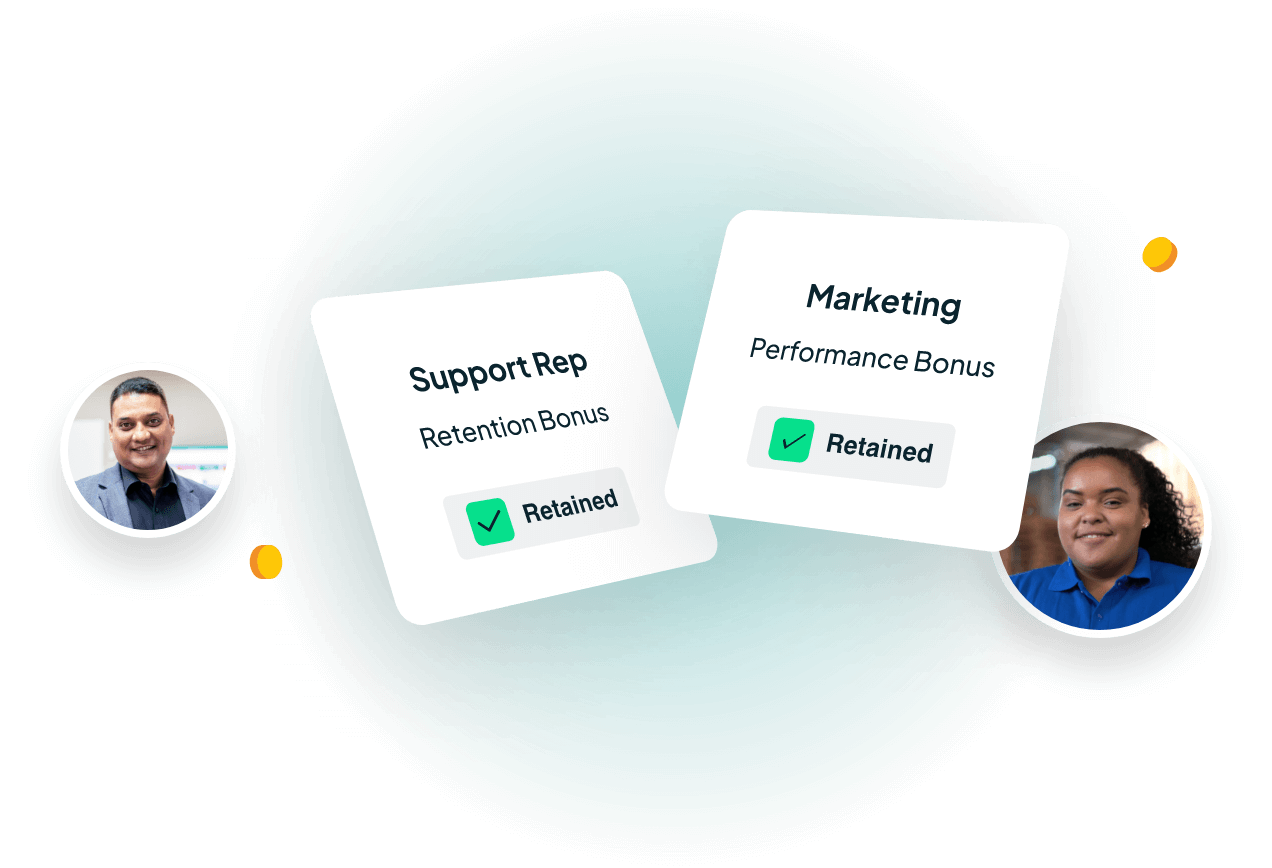
Related Insight

The Ultimate Guide to Employee Retention & Strategies

The Ultimate Guide to Employee Engagement

The Ultimate Guide to Employee Compensation
- [email protected]
- About Keep Financial
.png)
- Our Process
- Meet Our Team
- Online Community Site
- Bonus Plan Design
- Testimonials and Case Studies
- Great Game® Conference
- Introductory Workshop
- Master Business Course
- Great Game® Experience Workshop
- Strategic Planning
- Get in the Game Workshop
- Personal Finance Training
- See All Events
- Get A Coach

- Community Membership
- Become a Coach
- Have Us Speak at Your Event
- Trusted Partners
Fight For Your People, Reward Your People
1. What Is an Employee Bonus Plan?
2 . History of Employee Bonus Plans
3. Do Employee Bon us Plans Work?
4. Components of an Effective Employee Bonus Plan
What Is an Employee Bonus Plan?
An employee bonus plan provides compensation beyond annual salary to employees as an incentive or reward for reaching certain predetermined individual or team goals. The purpose of bonus plans is to provide recognition for employees who go above and beyond normal work obligations. This makes employees feel valued, which makes them more likely to stay with the company.
History of Employee Bonus Plans
The concept of performance-based rewards as a way to create a competitive edge and drive up company profits is not new. From the late 1800s to the 1920s, in a period in American history called the scientific management era , business concepts like compensation management were developed.
Henry L. Gantt, who conceptualized the bonus system, asserted that the focus of an employee bonus plan was on cooperation and efficiency rather than the individualistic nature of previous compensation systems. Today, the practice of motivating people through performance-based rewards is widespread.
Do Employee Bonus Plans Work?
The question of whether bonus plans work as intended is debated in some circles. However, the general consensus is that when executed correctly and in the right workplace environment or company culture, yes, they do work. Studies have shown that company bonus programs have a 79 percent success rate in achieving their established goals. Correctly structured bonus payouts were also found to increase employee performance by 44 percent. What’s more, employee incentive programs were seen to motivate 66 percent of people to stay with their employer. This is important, as just a 5 percent increase in employee retention can lead to profitability improvements of 25–85 percent.
One common concern is that the consistent awarding of bonuses can cause employees to begin viewing monetary rewards as part of their standard compensation. And when that occurs, the ability of the bonus to motivate employees to go the extra mile is diminished or lost. It is evident that not all bonus plans are created equal and that in order for a plan to be effective, the correct measures need to be put into place.
hbspt.cta._relativeUrls=true;hbspt.cta.load(2628288, 'fded35fd-9c03-4d36-b9c1-c4a61ff21535', {"useNewLoader":"true","region":"na1"});
Components of an effective employee bonus plan.
Developing clearly articulated bonus payouts and tying them to discrete performance metrics is key to making your employee rewards worthwhile and to eliminate the entitlement mentality. The following are essential elements to any successful company-wide rewards program .
Make Bonus Opportunities Available to Everyone
In order for your bonus plan to be effective, you must get company-wide buy-in on your goals and the rewards for achieving them. This means that you need to involve everyone in the company in the bonus plan in some way. Nothing kills morale faster than giving special privileges to some employees but not others.
Start Early and Tie the Bonuses to Financial Results
Don’t wait until the end of the year to determine what you can afford for bonuses and how much to give to your team. Make that determination based on profit targets early in the year as part of your annual budgeting process.
Let’s say your profit target is $200,000 and you designate 25 percent of anything in excess for the incentive plan. If you achieve $250,000 in profit, the bonus is 25 percent of the $50,000 excess, or $12,500.
If you use this approach, your team will know exactly what you are aiming for and what will be expected of them as the year progresses.
Reward Early Wins
Instead of one lump sum at year’s end, consider smaller, more frequent payouts throughout the year.
Incremental rewards help keep teams focused on goals early on and regular positive reinforcement has shown to be one of the best ways to affect behavior.
Fund the Payout in Advance
This may go without saying, but profit is not the same as cash. You need to be sure that you will have the cash to fund their bonuses. For example, if you offer your customers 30-day terms, consider paying the bonus 60 or more days after the bonus period ends. That way you have time to collect payments from your customers to fund the bonuses.
Educate Your Employees
Creating an effective bonus plan requires not only a thorough understanding of how the rewards system works but also basic knowledge of the company’s financials.
Financial literacy training that shows how company financial success is tied to employee financial success is essential.
Employees quickly see that if they want raises and bonuses, they will have to take action individually and as teams to fund those rewards.
Celebrate Wins
Effective bonus programs involve more than just monetary compensation. The desire for social recognition is also highly motivating, encouraging employees to improve their performance or continue delivering good work.
The effectiveness of an employee bonus system only comes into question when leadership has not designed or maintained it correctly. Leaders who are concerned with more than just increasing productivity, and who actually want to develop their employees will see significant improvements in motivation and goal attainment.

Get the Bonus Plan Calculator Tool
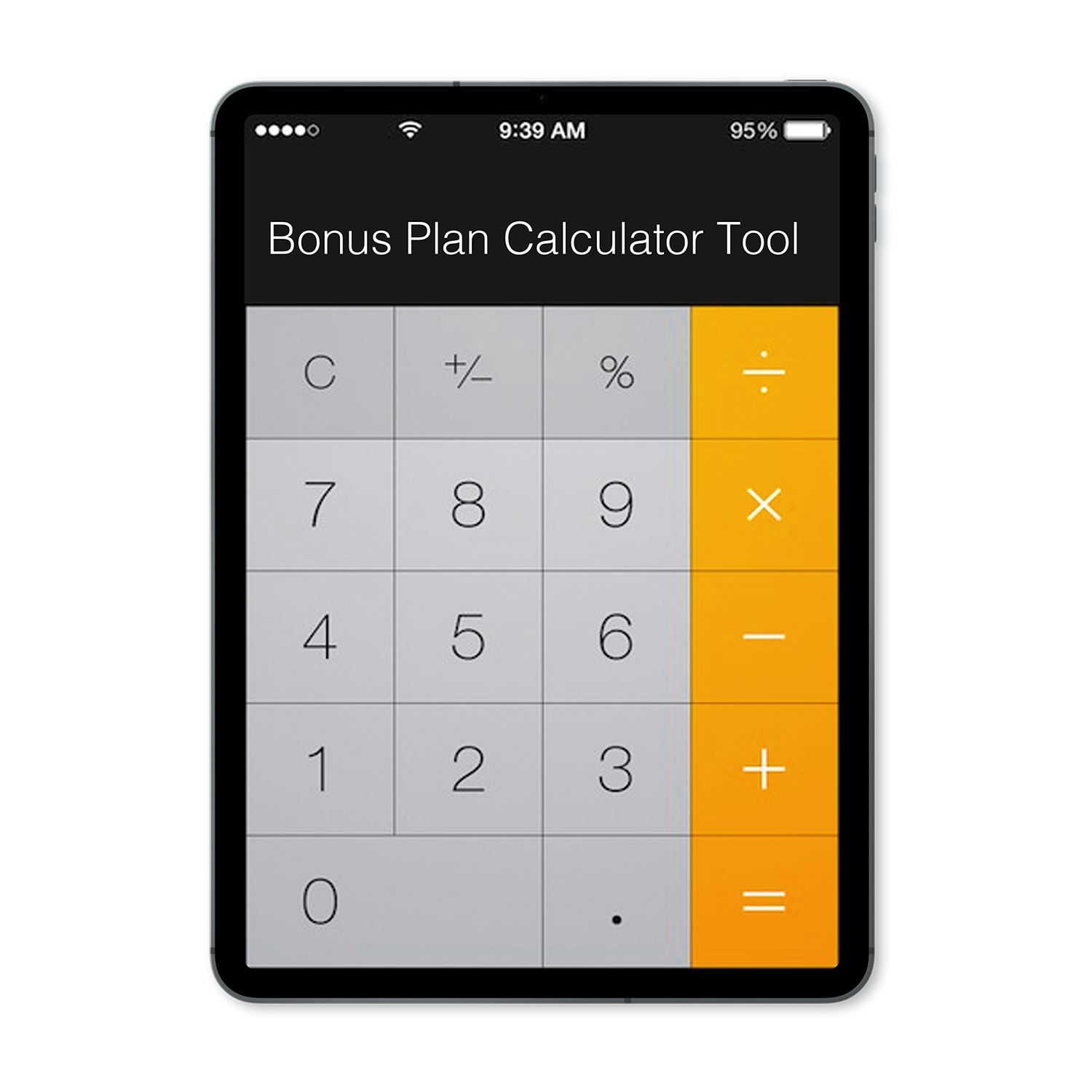
Find Out What It Costs
Get Started With The Great Game of Business

Terms and Conditions | Privacy Policy
All trademarks, trade names or logos mentioned or used herein are the property of their respective owners. Reference to any product or service by manufacturer, trade name, trademark or otherwise does not reflect any affiliation with the manufacturer or its endorsement of the products or services. | COPYRIGHT © 2019 THE GREAT GAME OF BUSINESS, INC. All rights reserved.
For nearly 40 years, The Great Game of Business™ has helped organizations reach their highest potential and value.
Tapping into the universal human need to win, GGOB educates your people in the rules of business, rallies them around a common goal, empowers them to see and improve the score, and engages them by giving them a stake in the outcome.
Quick Links
- Contact GGOB
- What is GGOB?
- It's People. It's Money. It's Both.
- People Support What They Help Create
- Open-Book Management
- Be Part of the SRC Team
The Great Game of Business
2401 E. Sunshine St. Springfield, MO 65804
800.386.2752

Unveiling the Power of Compensation Consulting: Boosting Employee Motivation and Navigating Benefits
In the realm of compensation management, there's a potent tool that can be leveraged to incentivize and boost employee motivation - a performance-based bonus plan. This aspect of compensation isn't just an afterthought, but a strategic instrument that can be harnessed to promote exceptional performance and drive organizational success.
Understanding Performance-Based Bonus Plans
At their core, performance-based bonus plans are part of the compensation package that aims to improve employee engagement . Fact: compensation and benefits are related to employee motivation.
Unlike base salary or government-mandated benefits such as workers compensation insurance benefits, performance-based pay is designed to give financial rewards to employees for their accomplishments, providing additional compensation to those who meet or exceed set performance standards.
Applying this compensation philosophy can be a win-win for both the company and its employees: companies benefit from enhanced productivity, while employees enjoy financial recognition for their hard work.
How to Set Up Performance-Based Bonus Plans
Performance-based bonus plans can act as powerful motivational tools in your compensation strategy. When executed correctly, they provide an incentive for exceptional work and drive both individual and collective growth and employee morale.
Here's a comprehensive guide on how to set up effective performance-based bonus plans to improve overall organizational performance.
Understanding Your Organization’s Goals
Before you delve into the details of the plan, take a step back to understand the broader organizational goals. Your performance-based bonus plan should align with these objectives. What are you trying to achieve? Increased sales? Better customer satisfaction? Higher productivity rates? Answering these questions will help guide the design of your bonus plan.
Additionally, having a sit-down compensation conversations with employees is crucial for a well-structured plan.
Identify the Key Performance Indicators (KPIs)
Once you're clear about your goals, the next step is to define the KPIs that will be used to measure performance. These should be measurable, relevant to your goals, and applicable across your organization. For instance, if you aim to boost sales, a KPI might be the percentage increase in sales over a defined period.
Setting Targets and Establishing Payout Structure
The next phase involves setting targets for each KPI and establishing the payout structure. Targets should be ambitious yet attainable, and it's crucial to clearly communicate what employees need to achieve to earn their bonus. The payout structure, whether it's a flat rate or percentage of salary, should be proportionate to the targets set.
Communicate the Plan
Communication is key to the success of a performance-based compensation plan. Ensure all employees understand the plan's details, the KPIs, how their performance will be measured, and what they stand to earn. This transparency helps foster trust and buy-in from the employees.
Review and Update the Plan Regularly
Performance-based bonus plans should not be set in stone. As your business evolves, so too should your bonus plan. Regular reviews allow you to adjust KPIs, targets, and the payout structure to remain relevant and continue to motivate employees effectively.
Designing Effective Performance-Based Bonus Plans
An effective performance-based bonus plan doesn't just materialize out of thin air. It requires careful design and planning, ensuring it aligns with the company's objectives and is fair and transparent. Some key factors to consider in this design process include:
Identifying key performance indicators (KPIs) : These are the metrics that will be used to evaluate performance. KPIs should be relevant, measurable, and directly tied to the company's objectives.
Setting realistic and challenging targets : Goals should be challenging enough to motivate employees, but realistic enough to be achievable. Setting unrealistic goals may lead to frustration and demotivation.
Transparency : The criteria for earning the bonus should be clearly communicated to employees. Transparency fosters a sense of fairness and can boost engagement and motivation.
Timing of bonus payments : Bonuses can be paid out annually, quarterly, monthly, or on achieving certain milestones. The timing can influence how employees perceive and value the bonus.
The Benefits of Performance-Based Bonus Plans
Performance-based bonus plans can yield significant benefits for both organizations and their employees. Let's shed some light on these advantages.
Encourages Employee Performance
First and foremost, these plans provide a clear incentive for employees to enhance their performance. By tying bonuses directly to individual or team achievements, organizations can motivate their employees to deliver their very best work.
Promotes Accountability
Performance-based bonus plans can foster a sense of accountability among employees. When individual performance has a direct impact on compensation, employees are more likely to take ownership of their responsibilities and strive to meet their goals.
Drives Organizational Success
When employees are motivated to perform, organizations win. Improved employee performance can lead to increased productivity, better quality of work, and ultimately, a boost in overall organizational success.
The Challenges of Performance-Based Bonus Plans
While performance-based bonus plans offer notable benefits, implementing them isn't without challenges. Understanding these potential pitfalls can help organizations navigate them more effectively.
Setting Fair and Measurable Performance Indicators
Determining the right KPIs to base bonus payments on can be a tricky business. The chosen metrics should be relevant, measurable, and fair to all employees.
Balancing Team and Individual Performance
Striking the right balance between rewarding team and individual performance can be difficult. A well-designed plan should foster both individual accountability and team collaboration.
Avoiding Unintended Consequences
Poorly designed performance-based bonus plans can lead to unintended consequences, such as promoting unhealthy competition or encouraging employees to focus on short-term gains at the expense of long-term objectives.
The Role of Compensation Consultants in Implementing Bonus Plans
Crafting an effective performance-based bonus plan is no small task. It requires a deep understanding of the organization, its goals, and its workforce. Compensation consultants play a crucial role in this process. With their expertise and experience, they can help design a bonus plan that aligns with the company's strategy, fosters employee motivation, and drives performance.
By identifying relevant KPIs, setting achievable yet challenging targets, ensuring transparency, and considering the timing of bonus payments, compensation consultants can guide organizations in implementing a performance-based bonus plan that truly drives employee motivation and organizational success.
Given the complexity and high stakes of implementing such a plan, turning to professionals can often be the best course of action. This is where Future Sense comes in. As a leading compensation consulting service, Future Sense is equipped to help organizations navigate the complexities of compensation management.
Our expert compensation consultants can provide insights and guidance, helping you set up a performance-based bonus plan that motivates your employees, drives organizational success, and makes the most sense for your future. Get in touch with us today to propel your business!

Gant’s Task and Bonus Plan
Gantt’s Task and Bonus Plan is another compensation system developed by Frederick Winslow Taylor and his associate Henry L. Gantt, who further refined the principles of scientific management. This plan is designed to incentivize employees to achieve specific tasks within a set timeframe, and it includes a bonus component as a reward for exceeding the set goals. Concept of Gantt’s Task and Bonus Plan: Gantt’s Task and Bonus Plan involves breaking down a job or task into smaller, manageable units or tasks. Each task is assigned a standard time or duration within which it should be completed. Employees who complete their tasks within or ahead of the set time receive a bonus in addition to their regular wages. Implementation: The implementation of Gantt’s Task and Bonus Plan includes the following steps: Task Identification: Jobs or tasks are analyzed to identify distinct and manageable tasks that can be measured and timed. Setting Standard Times: Standard times are established for each task based on time and motion studies. These times represent the expected duration for completing the task efficiently. Bonus Calculation: A bonus is calculated based on the difference between the actual time taken by the employee to complete the task and the standard time. If an employee completes the task faster than the standard time, they are eligible for a bonus. Bonus Payment: Employees who achieve or exceed the set task within the standard time receive a bonus in addition to their regular wages. The bonus amount is typically a percentage of their regular wages. Advantages of Gantt’s Task and Bonus Plan: Incentive for Efficiency: The plan encourages employees to work efficiently and complete tasks within the specified time to earn bonuses. Clear Goals: Employees have clear and specific goals to achieve, as tasks are well-defined and time-bound. Fair Compensation: The bonus system rewards employees based on their actual performance, providing a sense of fairness. Limitations of Gantt’s Task and Bonus Plan: Quality vs. Quantity: Similar to other incentive-based plans, employees might prioritize speed over quality to earn bonuses, potentially compromising the quality of work. Complexity: The administration and calculation of bonuses based on task completion and time differences can be complex and may require careful record-keeping. Task Variation: Some tasks may be more complex or require more effort than others, making it challenging to set standard times that are universally fair. Overemphasis on Speed: The plan might lead to an overemphasis on speed and completion, potentially neglecting other important aspects of job performance. Gantt’s Task and Bonus Plan, like other incentive systems, aims to motivate employees to achieve higher levels of productivity and efficiency. Its success depends on effective task analysis, accurate time measurement, and a balanced approach that considers both quantity and quality of work. Proper implementation and ongoing monitoring are essential to ensure that the plan achieves its intended goals while maintaining overall job performance and quality.
concept and methods of cost segregation: Estimation of cost
Priestman’s and scalon’s plan, you may also like, cost reduction, cost reduction and cost control: cost reduction-pre-requisites, techniques, steps, responsibility and limitations, value engineering (analysis): concept, advantages, tools and techniques for cost reduction, value analysis: concept, objectives, importance, advantages and techniques of value analysis., selling/distribution & administrative expenses budget and cost of goods sold budget., fixed and flexible budgeting: concept and importance of fixed and flexible budgets, leave a comment cancel reply.
Save my name, email, and website in this browser for the next time I comment.

- Development Management-I
- Fundamentals of Public Administration
- Public Sector Human Resource Management
- Local Self-governance
- Public Finance
- Business Communication
- Cost and management accounting
- Fundamentals of Financial Management
- Macroeconomics for business
- organizational behavior and hrm
- Second Paper
- Third Paper
- Fourth Paper
- CFA level1 notes
Adblock Detected
Your Article Library
Wages for the standard time under gant’s task and bonus plan.
ADVERTISEMENTS:
Read this article to learn about the determination of wages under Gant’s task and bonus plan, its advantages and disadvantages.
Gant’s task and bonus plan is based on careful time and motion study. A standard time is fixed for doing a particular task, worker’s actual performance is compared with the standard time and his efficiency is determined. If a worker takes more time than the standard time to complete the task (i.e., his efficiency is below 100%), he is given wages for the time taken by him and if a worker takes the standard time to perform the task (i.e., efficiency is 100%), he is given wages for the standard time and a bonus of 20% on the wages earned.
If the worker completes the task in less than the standard time he is given wages for the standard time plus a bonus of 20% of the wages for the standard time. In other words, if a worker’s performance is more than 100% he is given piece wages plus bonus at 20% of piece wages. Thus, with every reduction in time, the plan ensures progressive increase in total wages. For this reason, the plan is also known as “Progressive Rate System”.
Advantages :
1. The plan is not so harsh as the Taylor’s differential piece rate is. Therefore, it is more acceptable to the workers.
2. It is simple to understand.
3. It ensures guaranteed time wages to the worker who is below average workers.
4. It makes distinction between efficient and inefficient workers because the system ensures time wages for sub-standard workers and piece wages plus 20% bonus for standard and super-standard workers. Increasing rate of bonus is very satisfying to the efficient workers, so every worker tries to become more efficient.
5. Fixed cost per unit decreases with increase in production due to incentive for efficiency given under this scheme of wage payment.
Disadvantages:
1. Like Taylor’s differential piece rate method, it divides the workers into competing categories—one who earns the bonus and the other who does not earn the bonus. This brings disunity among workers and becomes unacceptable to the labour union.
2. The guaranteed time wages may not encourage efficiency if workers feel satisfied with the time wages.
Illustration :
From the following data, calculate total monthly remuneration of three workers A, B and C under the “Gant’s Task and Bonus Scheme”:
(i) Standard production per month per worker is 1,000 units.
(ii) Actual production during the month:
A—850 units, B—1,000 units and C—1,100 units.
(iii) Piece work rate—50 paise per unit.

Related Articles:
- Determining Efficiency under Gantt’s Task and Bonus Plan
- Taylor’s Differential Piece-Rate Plan and Ganit’s Task and Bonus Plans
Comments are closed.
ScholarsZilla
Creating a Community of Learners.
- BCOM / Educational Blogs
Gantt Task and Bonus Plan | Free Cost Accounting Articles
by Admin · September 25, 2020
Gantt Task and Bonus Plan
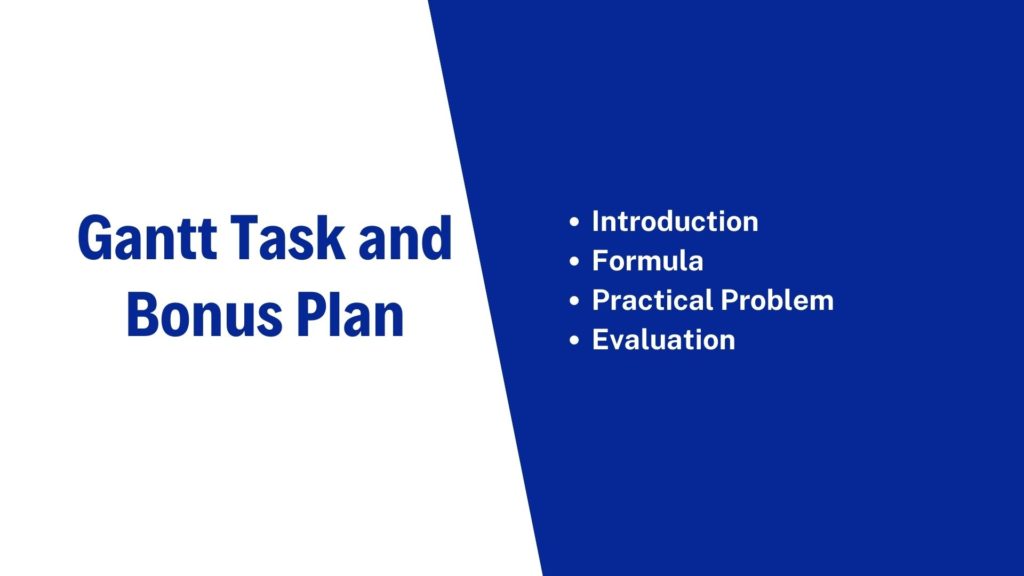
What is Gantt task and bonus plan?
This plan is called the Gantt task and Premium plan given by H.L. Gantt. In this method, workers are guaranteed wages as per the determined time. The quantity of production to be done by the group is decided.
The Gantt task and bonus plan is a cross between time wages and piece work. This system aims to eliminate the jump in the Taylor system and to bring in the Halsey system.
The system is expressed in terms of time wages with a set standard. For reaching the standard or task a 20% bonus was given and above it, Piece rates are paid. Time wages are guaranteed and this prevents discouraging the new workers, and also prevents the elimination of the poorer worker.
Yet each man should have a job equal to his capacity. It is not the function of a wage payment plan to keep poor workers from being discharged. The essence of this plan is to set a fairly high standard for average performance, or task, on each job, guaranteed time wages being paid up to that point, but for production, at a task, a bonus of from 20% is paid and above it, piece rates are paid or that stepped-up scale.
Only those workers who reach this specified standard or task will receive a high rate. It is to be seen that the setting of this standard is going to be difficult and to do it Taylor’s time studies were introduced.
Solved example of Gantt Task and Bonus Plan
Standard Rate – Rs. 5 Per Hour Standard hours for the job – 8 Hours Bonus – 20% of Standard Time Worker A Completes work in – 10 Hours Worker B Completes work in – 8 Hours Worker C Completes work in – 6 Hours
Compare the earnings of A, B, and C under the Gantt Task and Bonus Plan.
Wages of worker A, = 10 hrs x Rs 5 = Rs 50
Wages of worker B, = 8 hrs x Rs 5 + 20% of 40 = Rs 40 + 8 = 48
Wages of worker C, = 8 hrs x Rs 5 + 20% of 40 = Rs 40 + 8 = 48
A’s Earning per hour = 50/10 = Rs 5 B’s Earning per hour = 48/8 = Rs 6 C’s Earning per hour = 48/6 = Rs 8
Tags: gantt bonus plan gantt task bonus plan gantt task bonus plan cost accounting gantt task bonus plan labour costing
You may also like...

Exception of Law of Demand (6 Points) | Free Economic Blogs
October 16, 2021
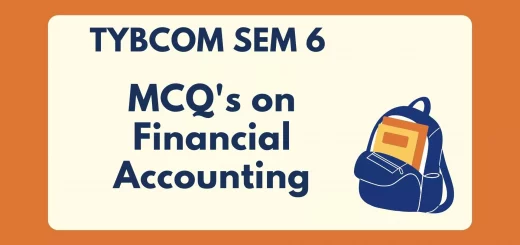
TYBCOM Sem 6 Financial Accounting MCQ (Free) – Scholarszilla
April 1, 2022

Introduction to Marketing MCQ | 50 Free MCQs
October 17, 2021
Leave a Reply Cancel reply
Your email address will not be published. Required fields are marked *
Save my name, email, and website in this browser for the next time I comment.
- Next story Dissolution of Partnership Firm Class 12 | Maharashtra Board New Syllabus
- Previous story English Paper Pattern of Class 12 (Free Pdf) 2024-25 | Maharashtra Board
Recent Posts
- MCOM SEM 4 Old Question Papers – Mumbai University (Free pdf Download)
- MCOM SEM 3 Old Question Papers – Mumbai University (Free pdf Download)
- MCOM SEM 2 Old Question Papers – Mumbai University (Free pdf Download)
- MCOM SEM 1 Old Question Papers – Mumbai University (Free pdf Download)
- HSC Question Paper July 2023 – 12th Commerce (Download Free pdf)
- MCOM SEM 3 Question Papers Nov 2016 – Mumbai University (Download Free pdf)
- MCOM SEM 3 Question Papers Jan 2018 – Mumbai University (Download Free pdf)
- Skip to main content
- Skip to primary sidebar

Business Jargons
A Business Encyclopedia
Gantt Task System
Definition: Under Gantt Task System , the standard time is fixed for the completion of a task based on a careful time and motion study. The worker’s actual performance is compared against the standard time to determine his efficiency and make the payments accordingly.
The Gantt task system guarantees the worker’s time-rate for the level of output below the standard. Thus, if the worker takes more than the standard time to complete the task, then his efficiency is below 100%, and he is paid only the time wages.
If the worker completes the task within the standard time, then his efficiency is 100% and in addition to the time wages, he is also paid a bonus of 20% on the wages earned. If the worker takes less than the standard time to complete a task, then his efficiency is more than 100%, and the wages are paid at high-piece rates .
The Gantt task system can be illustrated by the following example:
Rate per Hour = Rs 0.5 High piece-rate= 0.10 Standard Output= 100 units Time Taken = 8 hrs
Case (1): Output = 80 units
Since the output is less than the standard, the worker is entitled to only time wages, thus, Earnings = 8 x 0.5 = Rs 4
Case (2): output = 100 units
As the output is equivalent to the standard, the worker is paid the time wages plus a bonus of 20% on time wages. Thus, Earnings: Time Wages = 8 x 0.5 = Rs 4 Bonus = 20/100 x 4 = Rs 0.8 Total Earnings = Rs 4.08
Case (3): Output = 110 units
Since the output is more than the standard, the worker shall be paid at a high piece-rate, thus, Earnings = 110 x 0.10 = Rs 11
Related terms:
- Emerson Plan
- Merrick Differential Piece-Rate System
- Taylor’s Differential Piece-Rate System
- Halsey Plan
- Straight Piece-Work System
Reader Interactions
Sumathi says
August 16, 2018 at 9:29 am
when high piece rate is not given? how to calculate for the above example sum.
Leave a Reply Cancel reply
Your email address will not be published. Required fields are marked *

COMMENTS
Gantt Task Bonus Plan is suitable where the employer has set a minimum time wage as guaranteed to all workers to avoid the risk of missing an income. 1.4 Advantages of using Gantt Task Bonus Plan to Compute Labor Cost. Gantt Task Bonus Plan is less punitive as compared to Taylor's differential piece rate is. Therefore, it is more acceptable ...
Task bonuses or mission bonuses — Usually given after the conclusion of a large project or after hitting a significant milestone, ... An effective performance bonus plan starts with choosing the right objectives. At this stage, you still have the opportunity to refine your objectives, and ideally, you'll invite your staff into this process. ...
Implementing a performance bonus system or bonus plan, however, isn't a straightforward task. It requires a deep understanding of company goals, human resources, clear communication with employees about expectations, and a fair, transparent process for evaluation and reward. For starters, companies must be very clear about what triggers a bonus.
An employee bonus plan is a way for a company to reward and encourage employees to reach certain goals or achievements, pushing them to do more while also helping the business succeed. How Bonus Plans Work. Bonus plans usually involve performance targets for employees to achieve and earn bonuses. This includes boosting sales, lowering costs, or ...
An employee bonus plan, which is also often referred to as an employee incentive plan, is essentially a document that contains the company's plan for the payments of bonuses to its employees on an annual basis. This is highly encouraged for businesses that regularly give bonuses to its employees. The importance of bonus or incentive plans can ...
Bonus plans that are tailored to a function and market can be highly effective in driving the individual and team behaviors needed to achieve collective success. The right tools are essential. By now, if any of this information is new to you, creating a structured bonus plan must feel like a daunting task.
Start first by understanding your goals, and then work backward to formulate a plan to incentivize the achievement of those goals. 2. Financial constraints: Of course, you cannot freely give away money your company doesn't have. You also cannot reward employees with bonuses that do not mirror the impact of their work.
This is not a time- or goal-based bonus plan. The amount for this bonus varies depending on the company and the act that prompted the bonus. Non-cash bonus ... Companies give a milestone bonus, also called a mission or task bonus, for completing a milestone on a project or a goal. This bonus can happen during the middle of a project or any big ...
Gantt's Task and Bonus Plan. It is the individual wage incentive output based plan. It is developed by Henry L. Gantt. Under this plan, the standard time for every task is fixed through time and motion study. A minimum time wage is guaranteed to all workers. A worker who fails to complete the task within the standard time receives wages for ...
For example, you could structure your employee bonus plan like this: 1. Company Goal - A financial goal the company must meet/exceed - 25% of the eligible bonus amount. 2. Departmental Goal - A goal the department must meet/exceed measuring quality, performance, customer service, financials, safety, etc. - 25% of the eligible bonus ...
Here are some examples of team bonus plans: Revenue-sharing. A percentage of monthly revenue is set aside for the bonus pool. The company distributes the bonus among team members based on seniority, role, and performance. This plan rewards teamwork that generates top-line growth. Profit-sharing. The company allocates a percentage of monthly or ...
For example, they may need to meet certain sales targets, complete important tasks, or take on 'bonus opportunities' to be eligible for the reward or bonus. This plan is then shared with your employees to ensure they know what their goals are. ... In a nutshell, an employee bonus plan is a recipe for success that benefits both employees and ...
Setting up a bonus structure can be a daunting task but with the right plan and strategies in place, any HR and Finance team can create something that works best for their organization's needs. It is important to consider how bonuses help with employee retention and engagement when designing the structure plan.
An employee bonus plan provides compensation beyond annual salary to employees as an incentive or reward for reaching certain predetermined individual or team goals. The purpose of bonus plans is to provide recognition for employees who go above and beyond normal work obligations. This makes employees feel valued, which makes them more likely ...
Crafting an effective performance-based bonus plan is no small task. It requires a deep understanding of the organization, its goals, and its workforce. Compensation consultants play a crucial role in this process. With their expertise and experience, they can help design a bonus plan that aligns with the company's strategy, fosters employee ...
This plan is designed to incentivize employees to achieve specific tasks within a set timeframe, and it includes a bonus component as a reward for exceeding the set goals. Concept of Gantt's Task and Bonus Plan: Gantt's Task and Bonus Plan involves breaking down a job or task into smaller, manageable units or tasks. Each task is assigned a ...
#6 Gantt Task Bonus Plan (Part 1) - Labour Cost | TYBCOM SEM 5 Cost Accounting | BAF | BMS GANTT TASK BONUS SYSTEM:This system also includes the establishmen...
Gant's task and bonus plan is based on careful time and motion study. A standard time is fixed for doing a particular task, worker's actual performance is compared with the standard time and his efficiency is determined. If a worker takes more time than the standard time to complete the task (i.e., his efficiency is below 100%), he is given ...
The Gantt task and bonus plan is a cross between time wages and piece work. This system aims to eliminate the jump in the Taylor system and to bring in the Halsey system. The system is expressed in terms of time wages with a set standard. For reaching the standard or task a 20% bonus was given and above it, Piece rates are paid.
The Gantt task system guarantees the worker's time-rate for the level of output below the standard. Thus, if the worker takes more than the standard time to complete the task, then his efficiency is below 100%, and he is paid only the time wages.. If the worker completes the task within the standard time, then his efficiency is 100% and in addition to the time wages, he is also paid a bonus ...
Gantt Task Bonus Plan This method has a combined time fee, bonus and single price plan. It's a salary is calculated as follows: Production under standard - Guaranteed time speed Standard Production - Bonus 20% of the [regular] time price Production above standard - High number of pieces in total production This method guarantees a minimum wage ...
In this video I have explained Gantt Task and Bonus Plan and solved a problem of calculating earnings of workers under this method.Previous VideosMerrick's D...
easily understand with an example
See whether your tasks are going to plan via the Planned vs Actual Reports functionality. Compare the current task or milestone status to what you originally planned. ... Bonus tool. Teamhood: best for Kanban project management. Teamhood is a visual project management platform for teams, which includes Kanban boards, Gantt charts, Workload ...